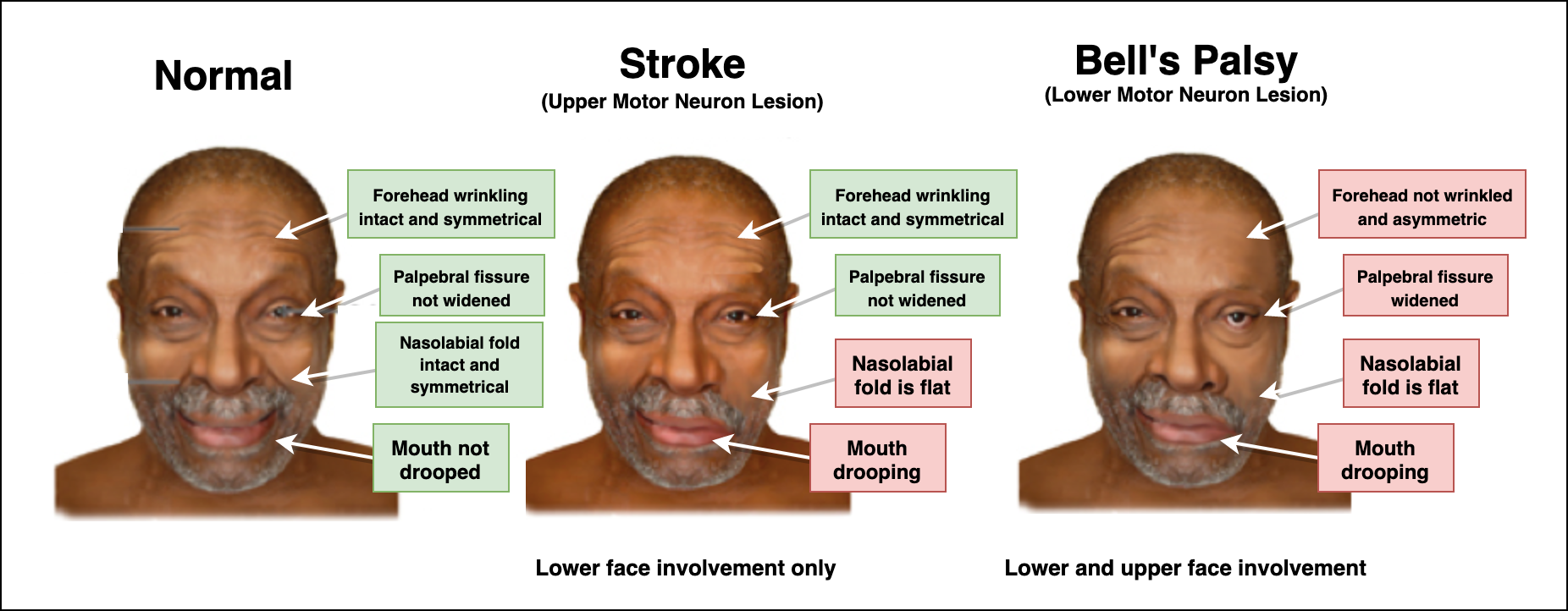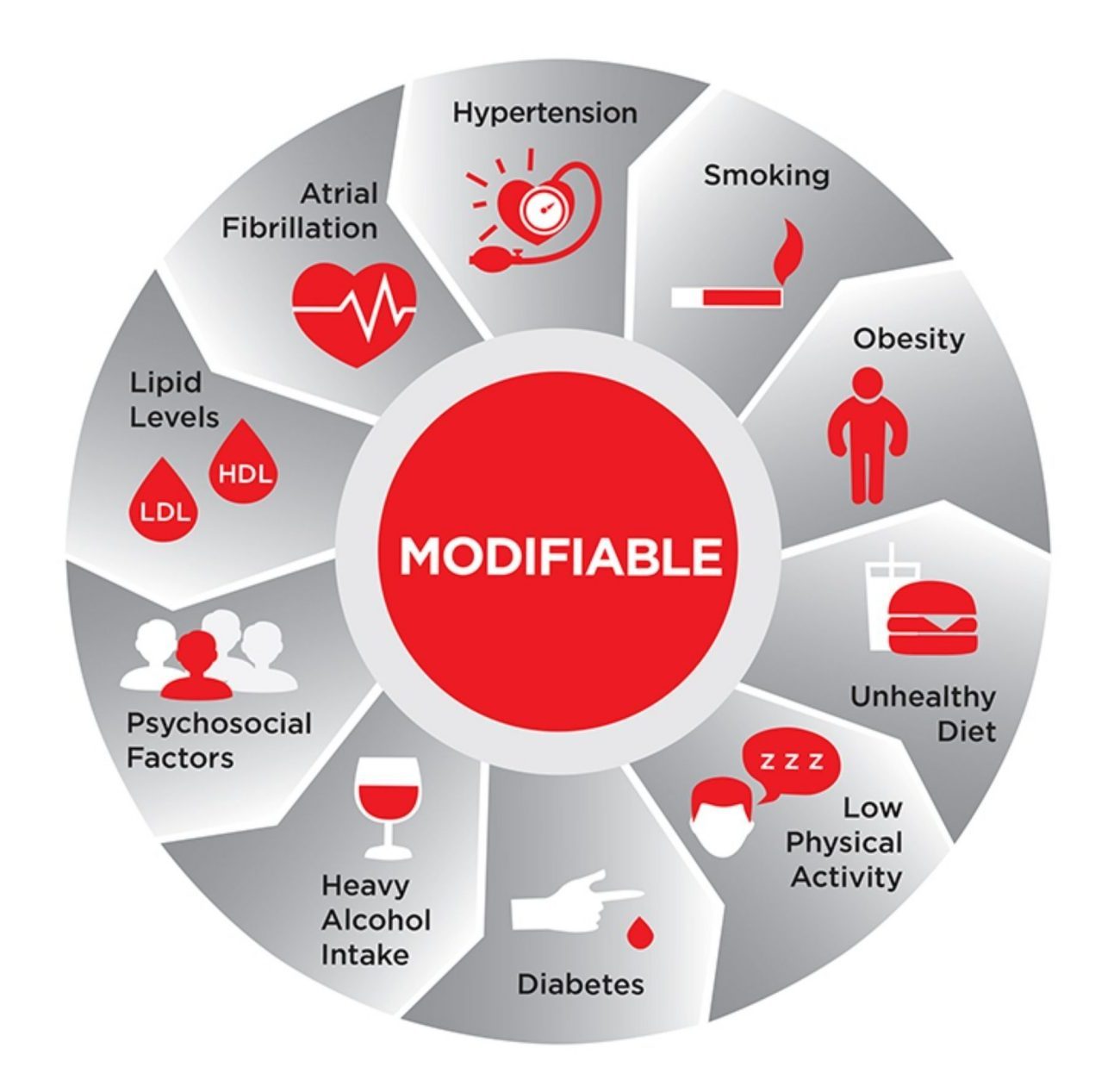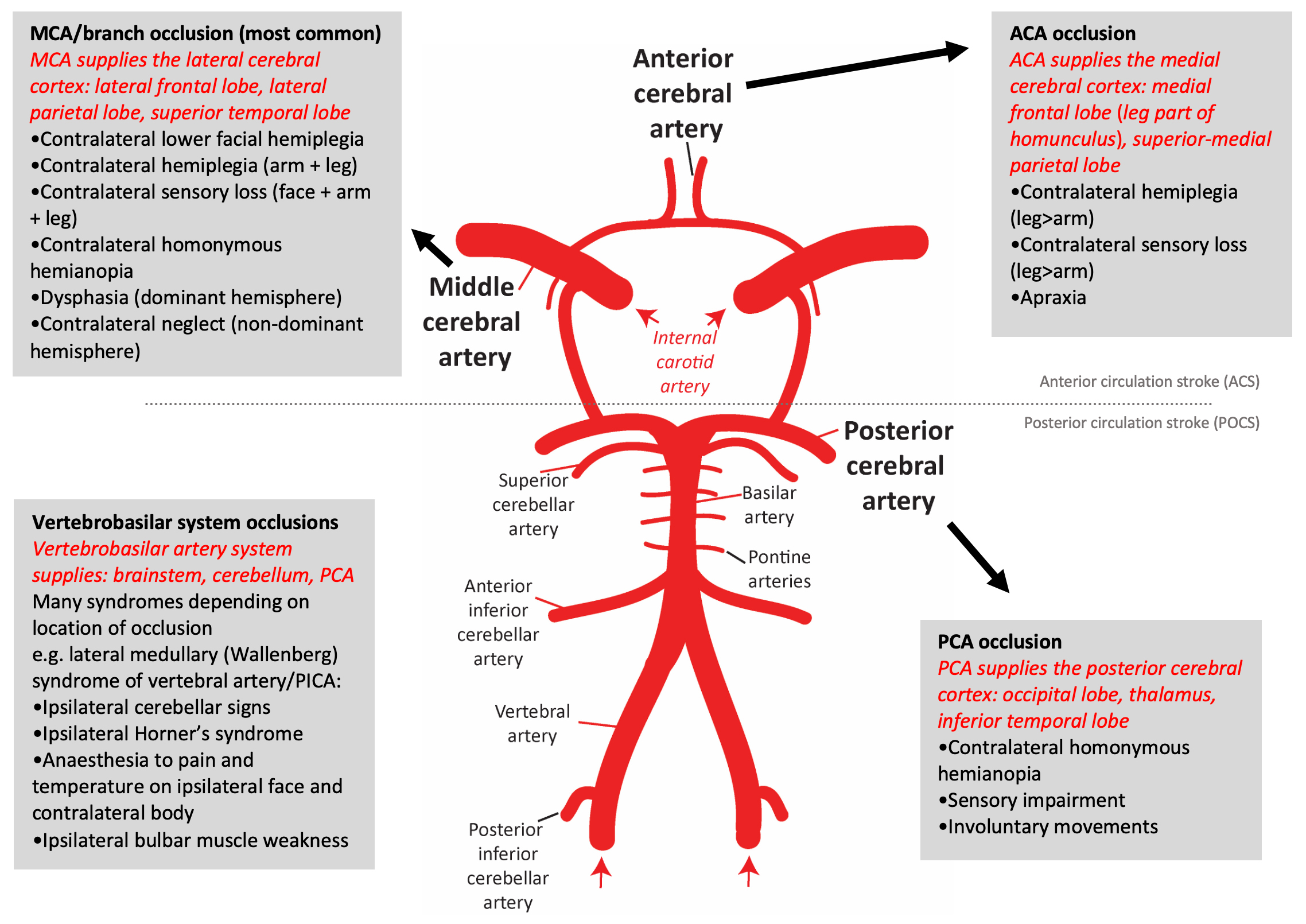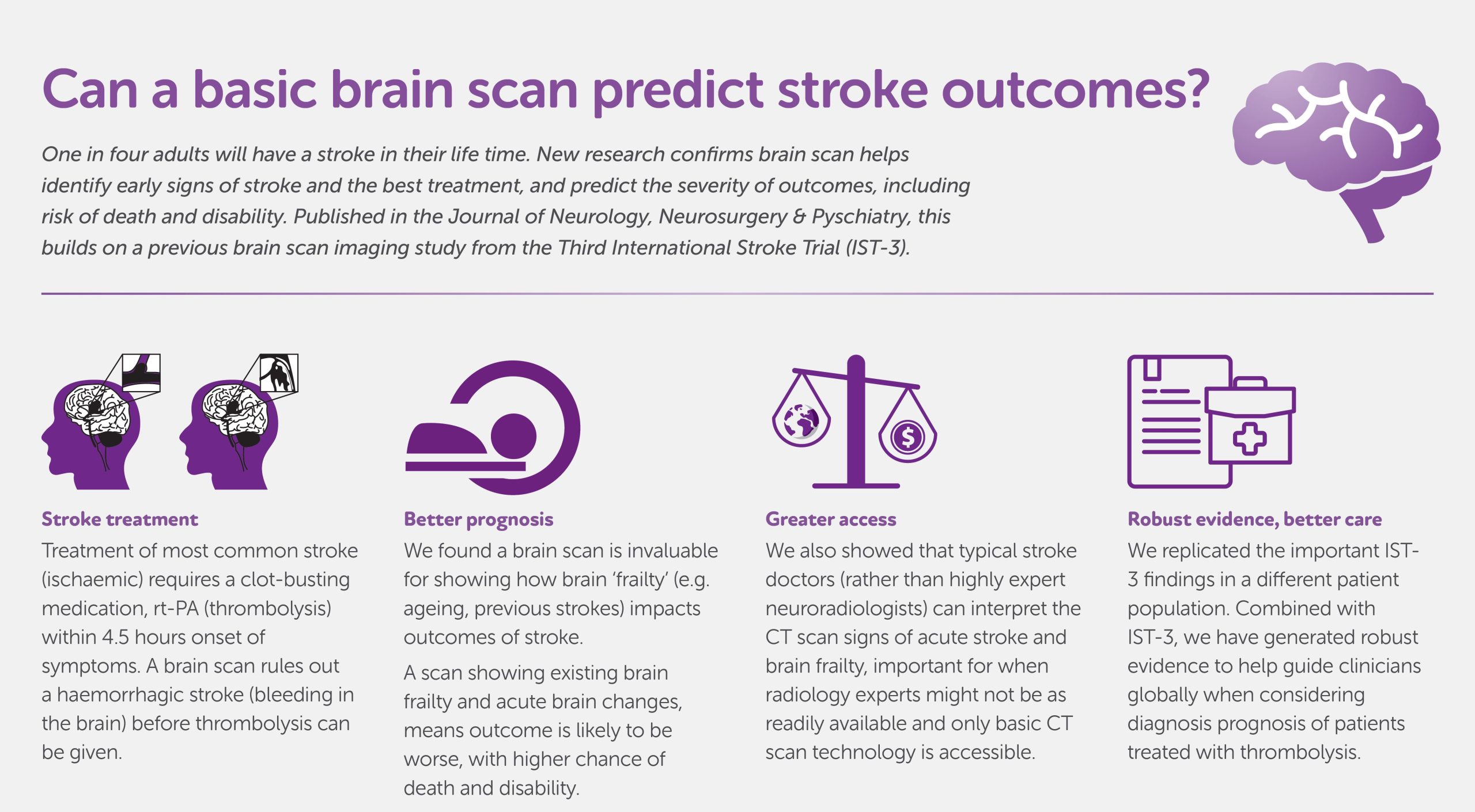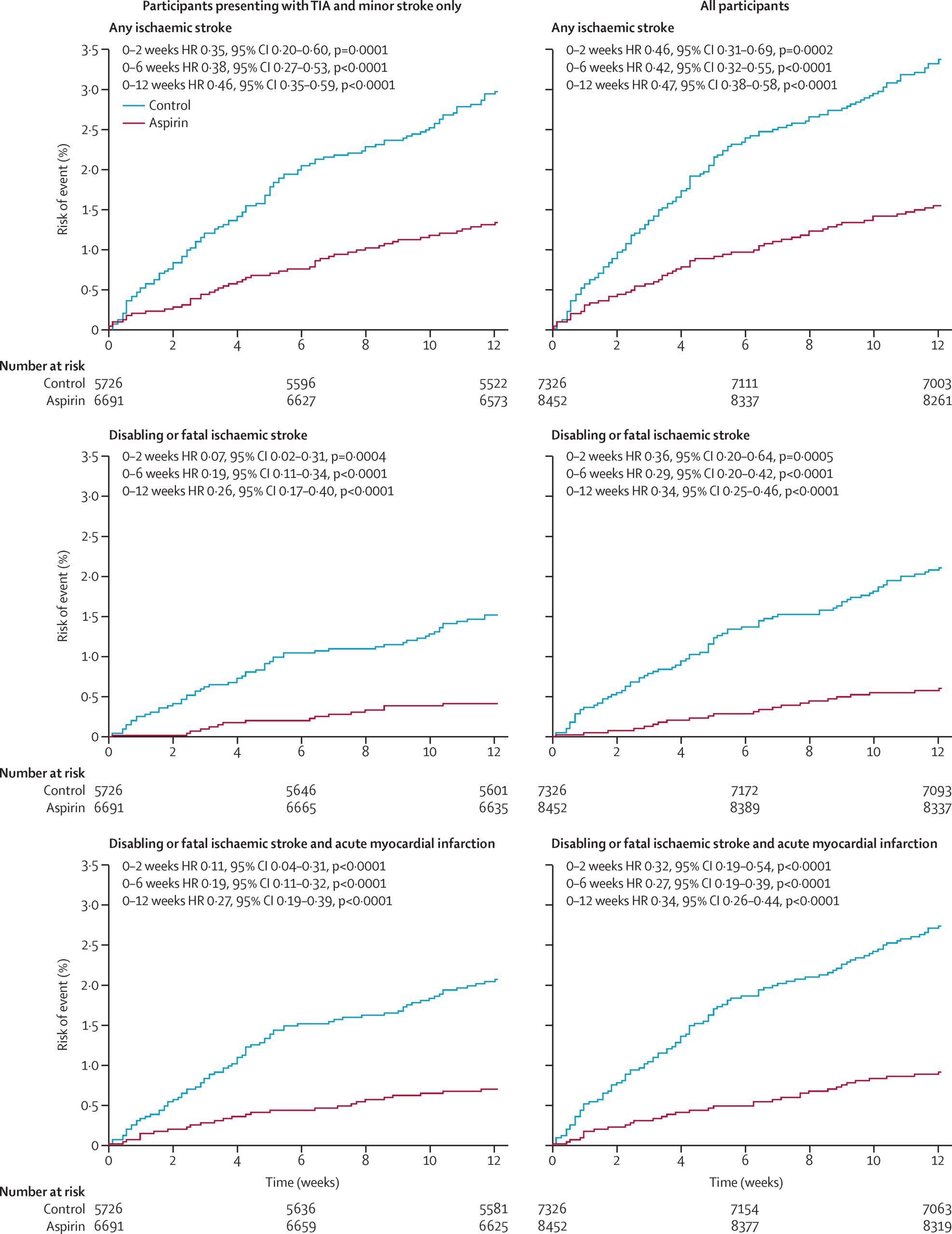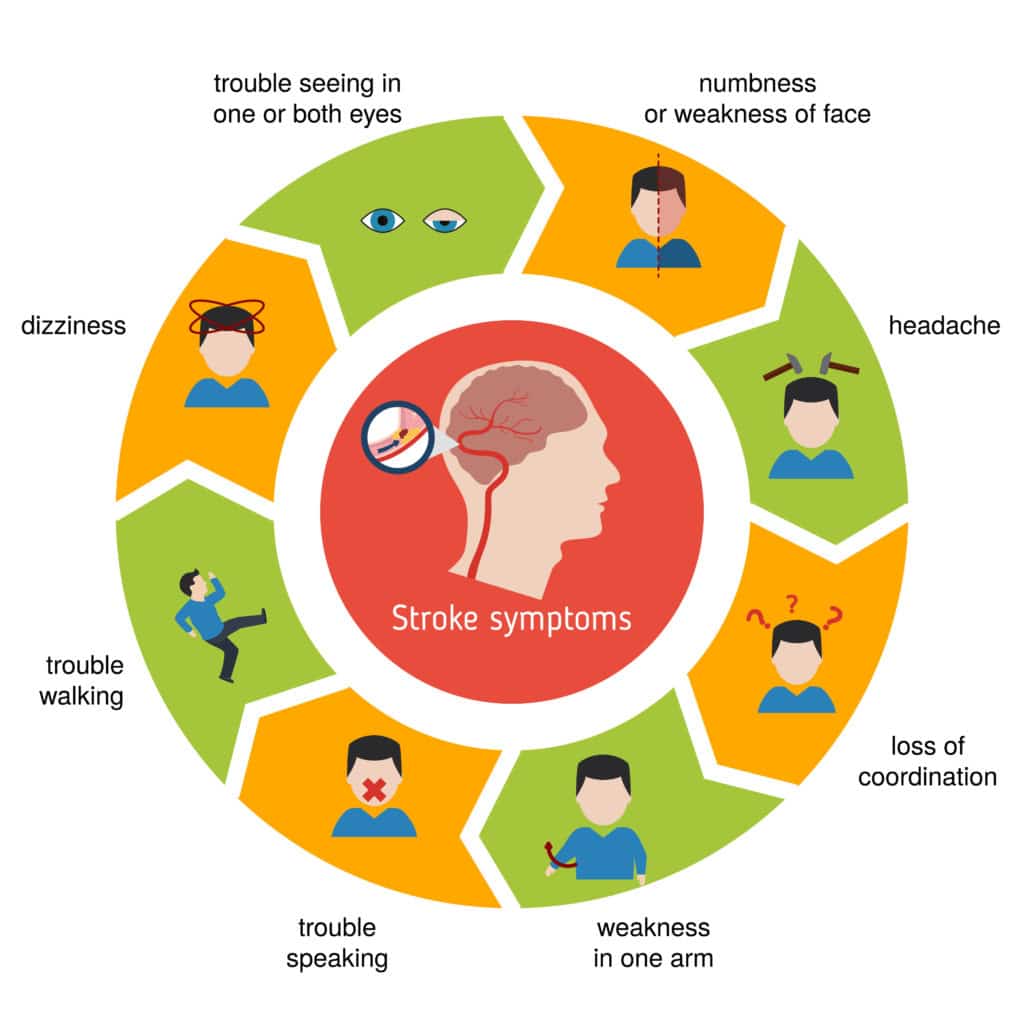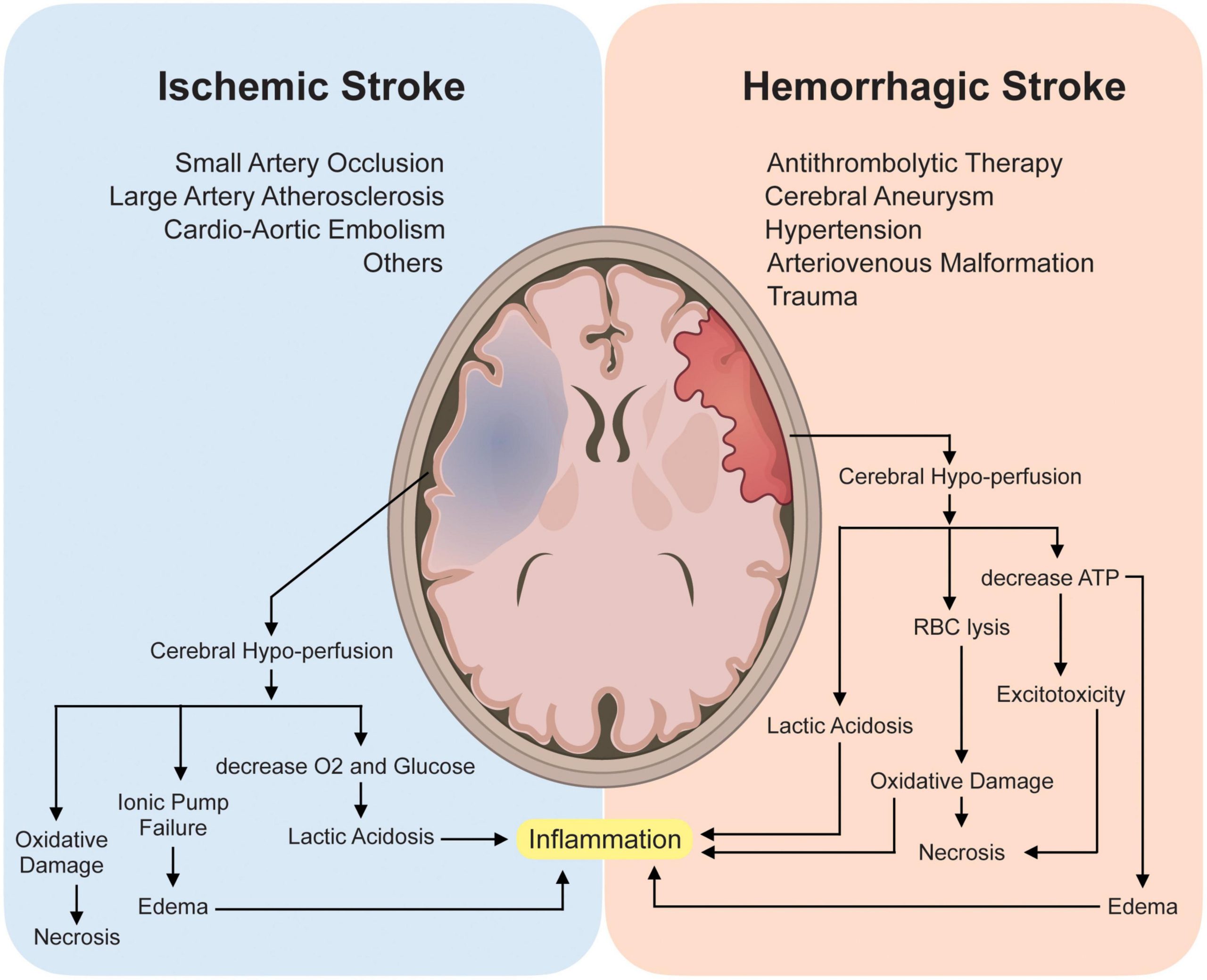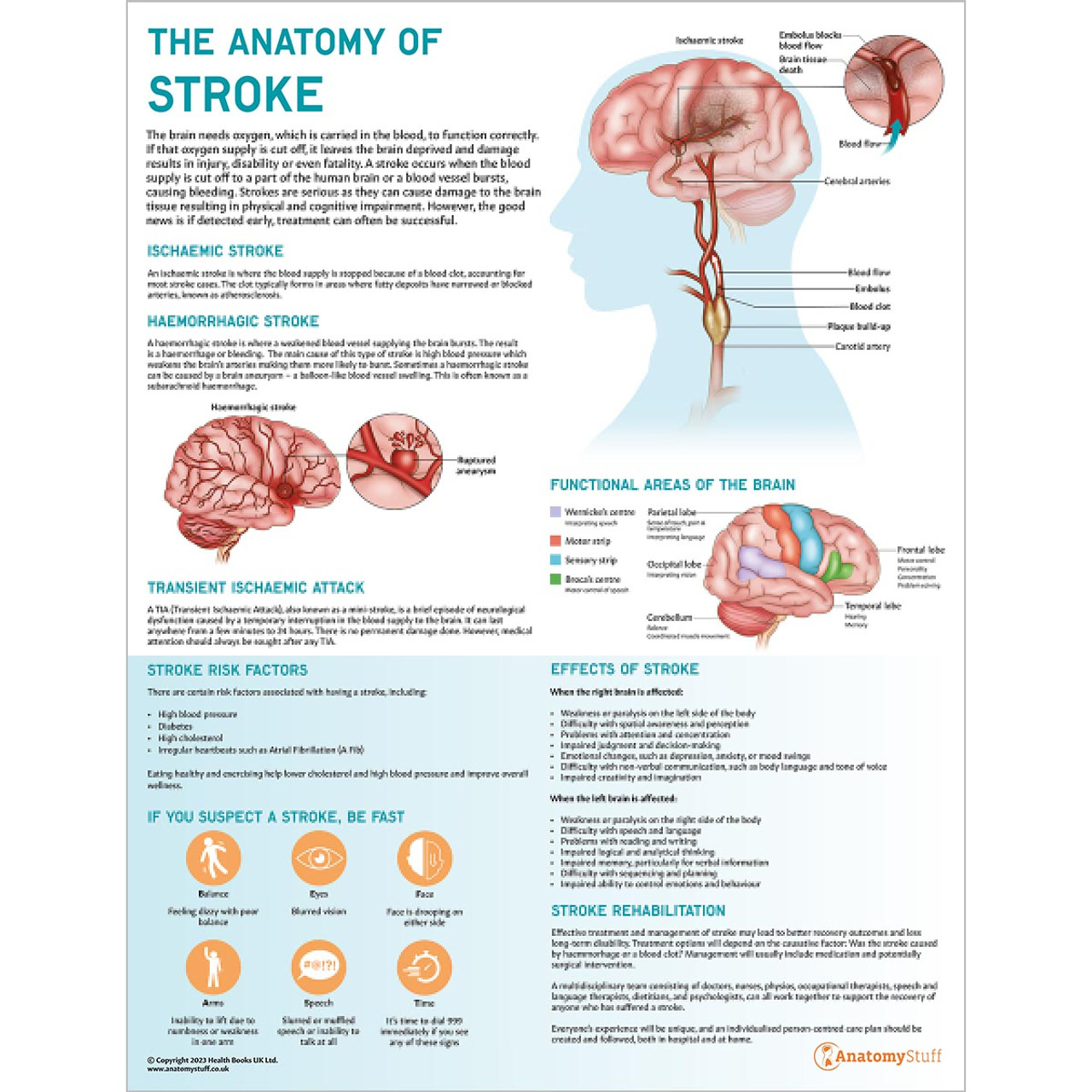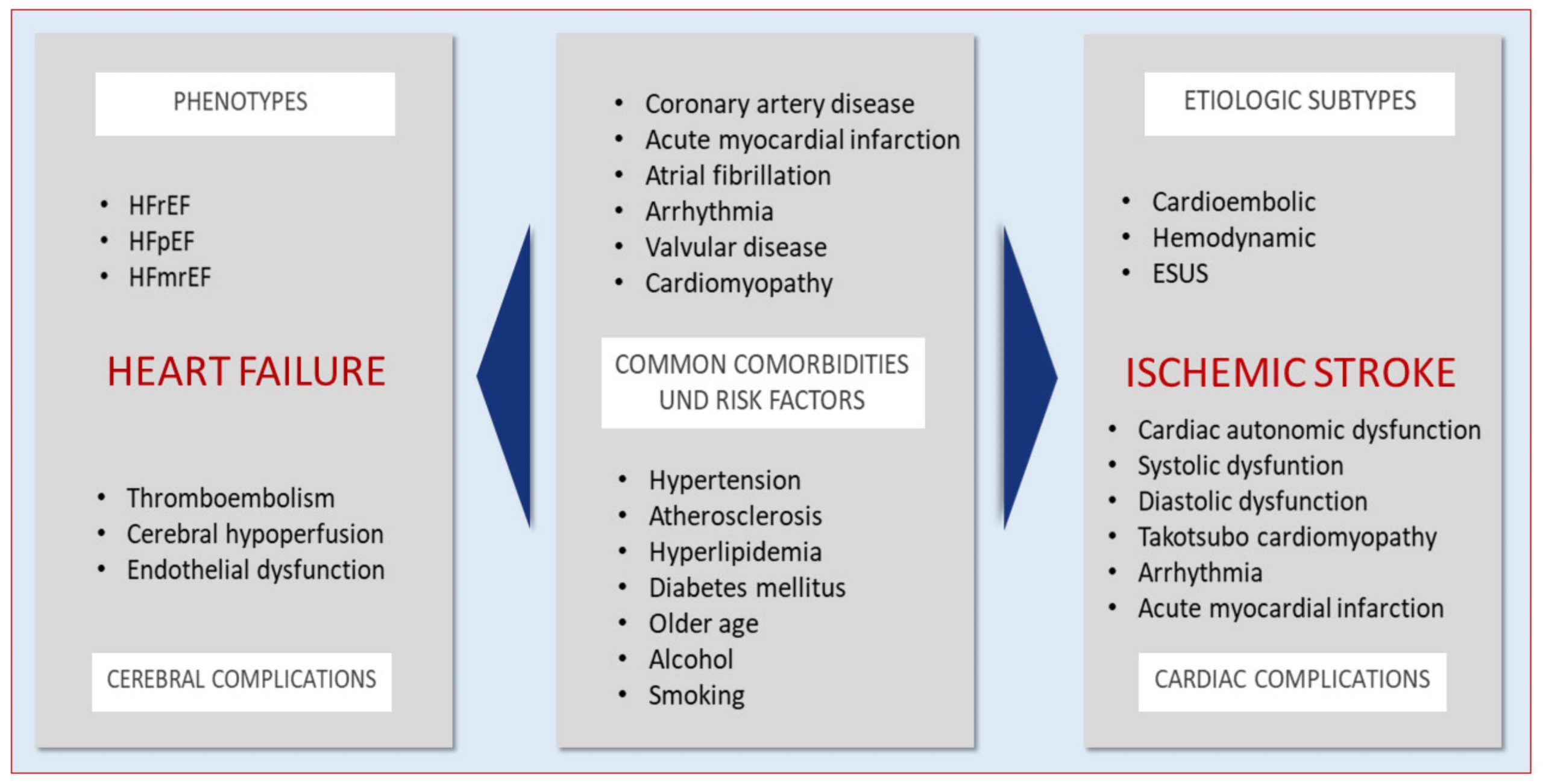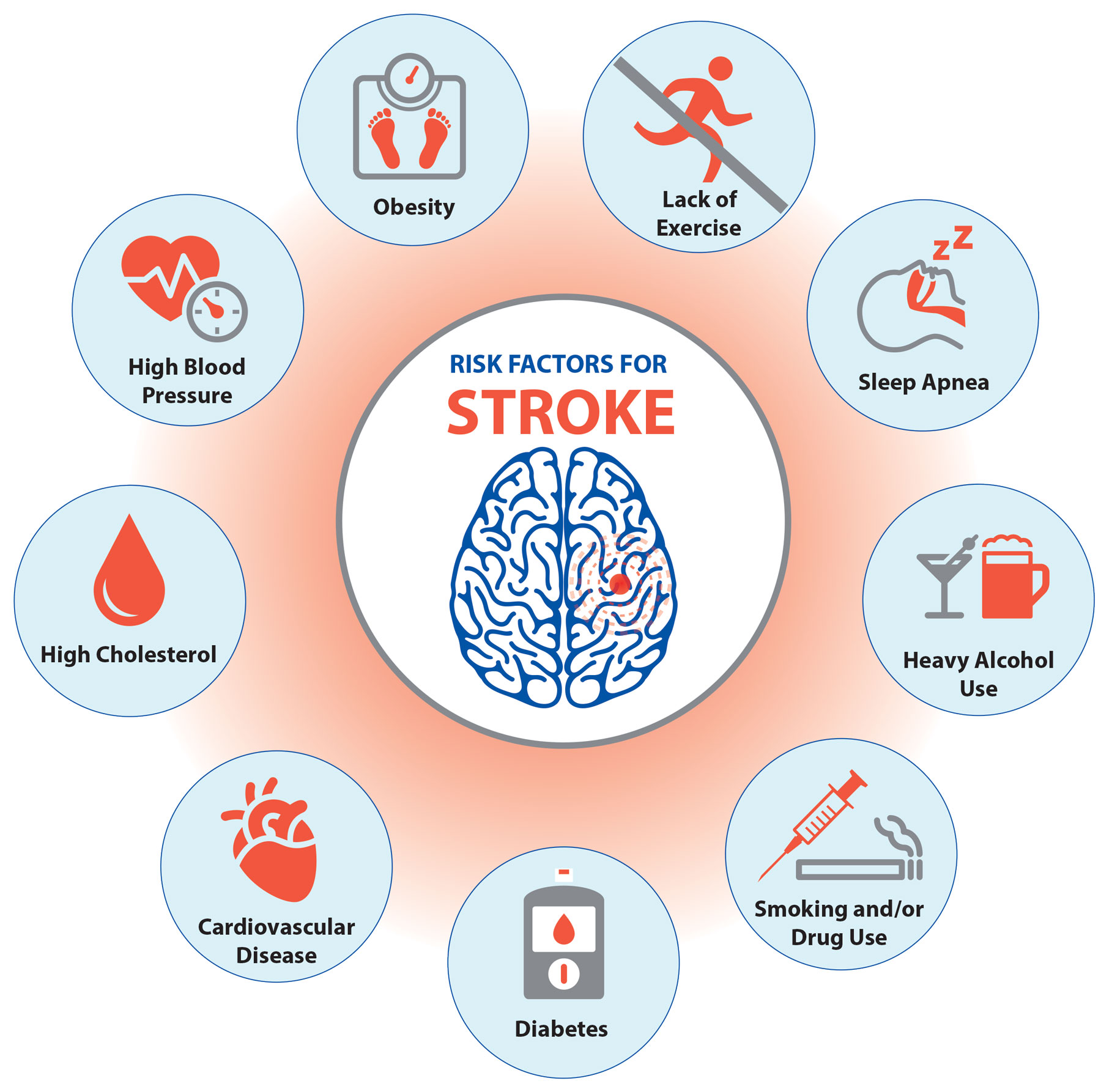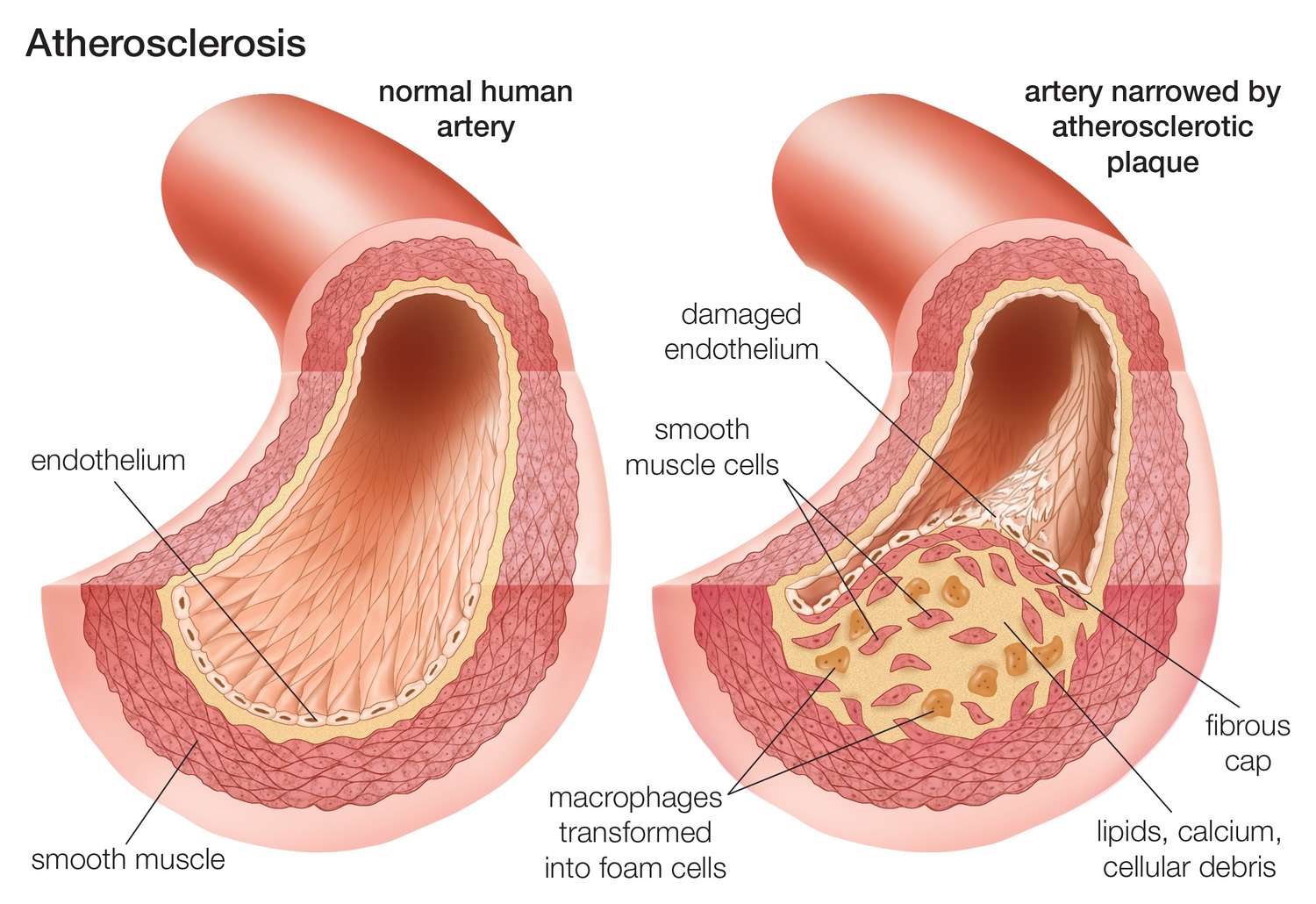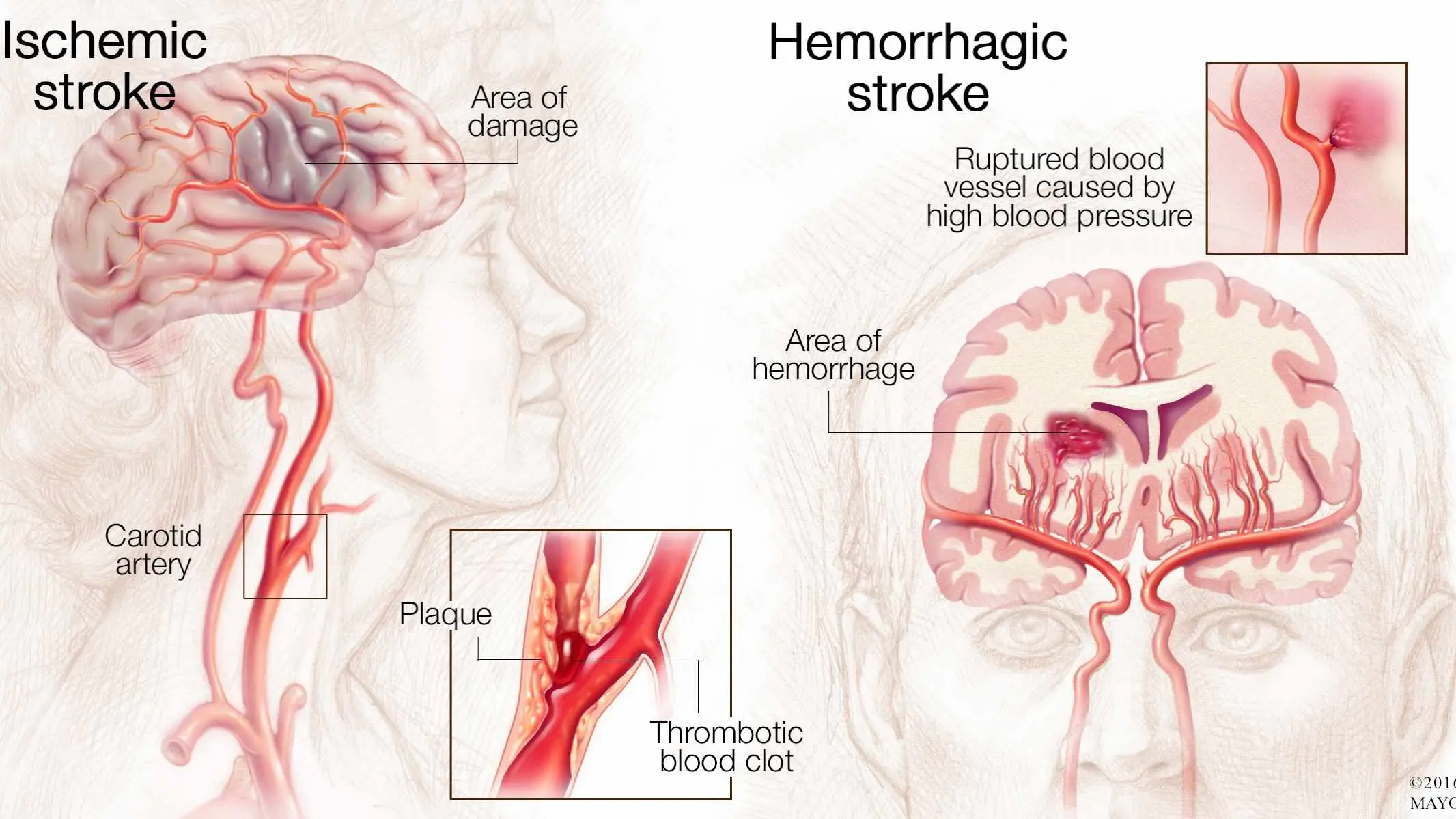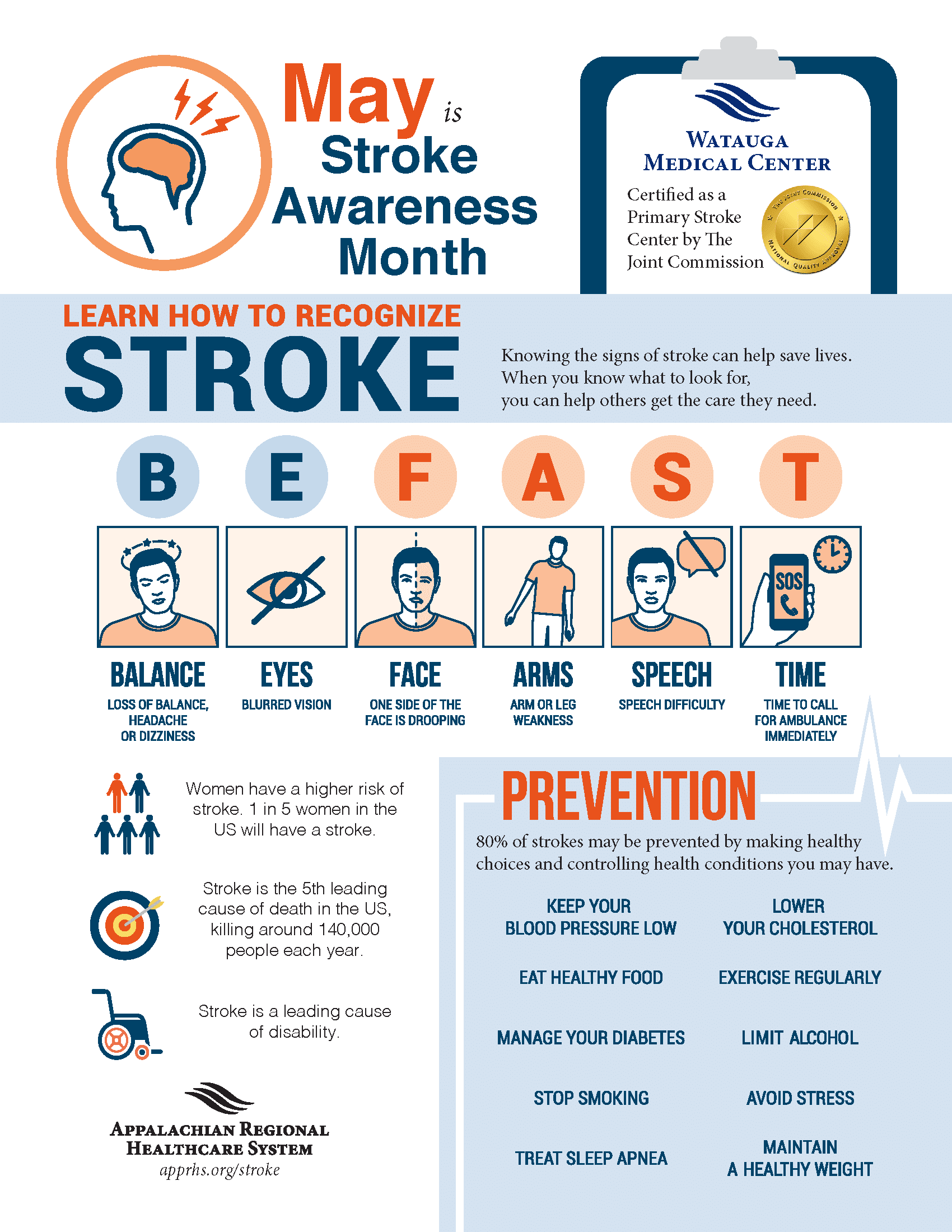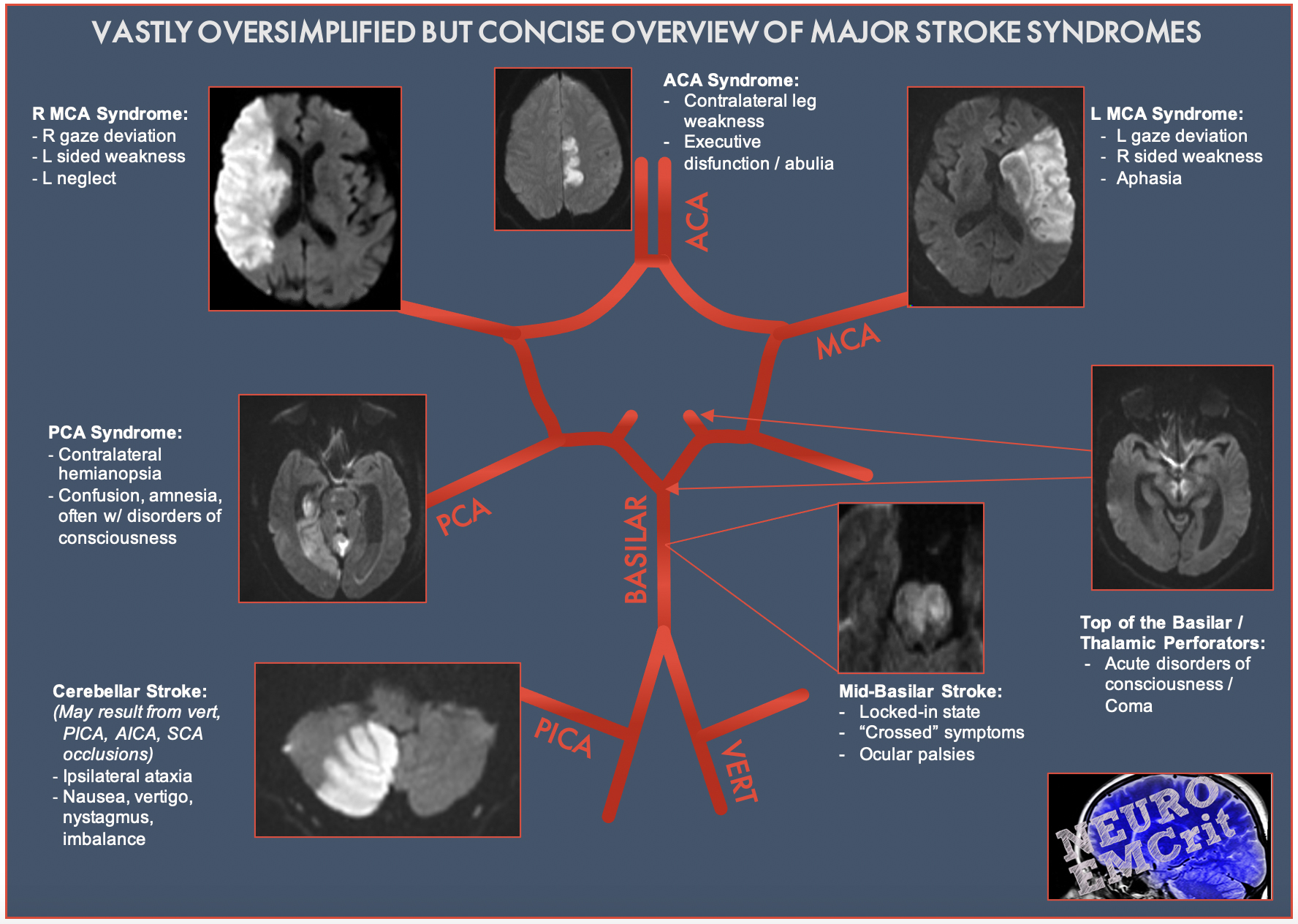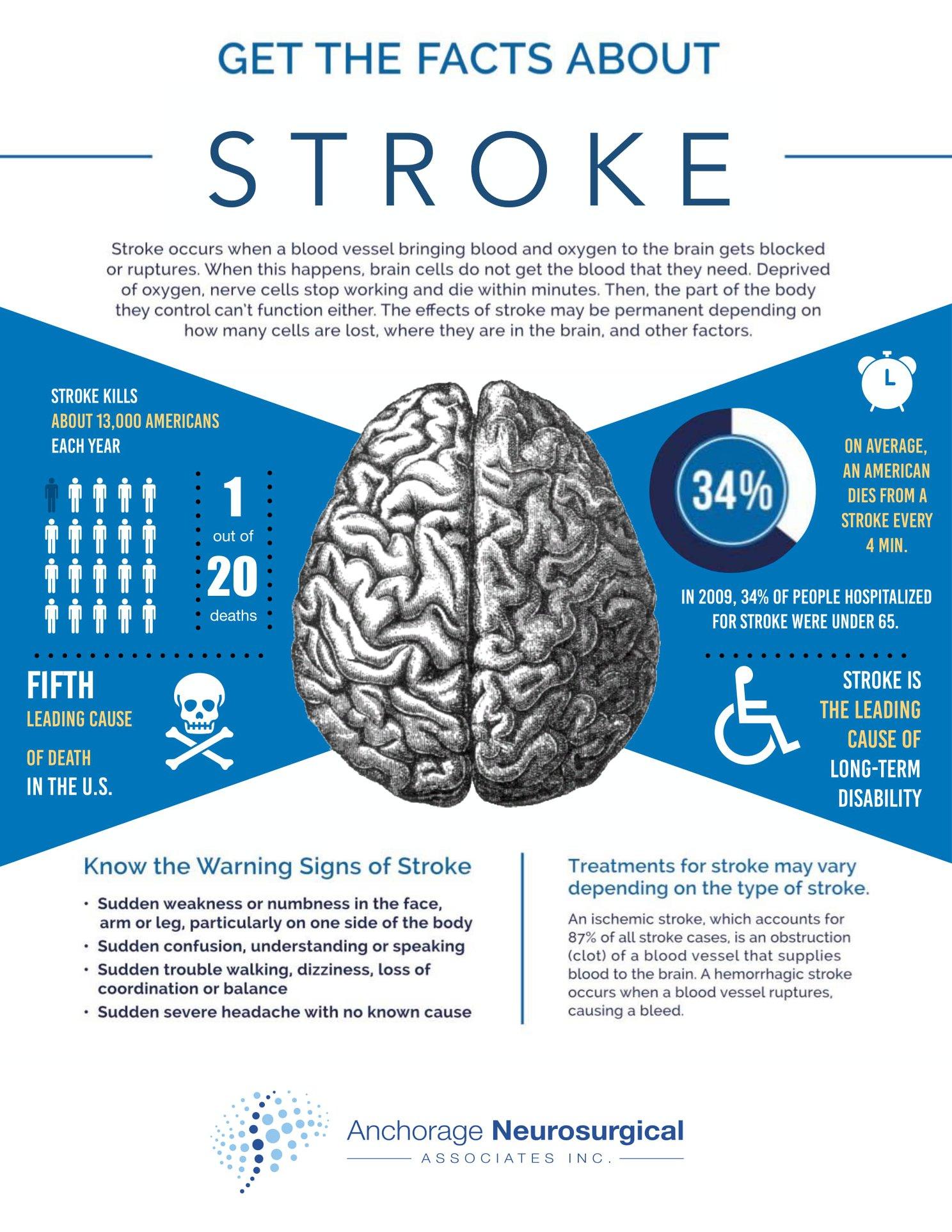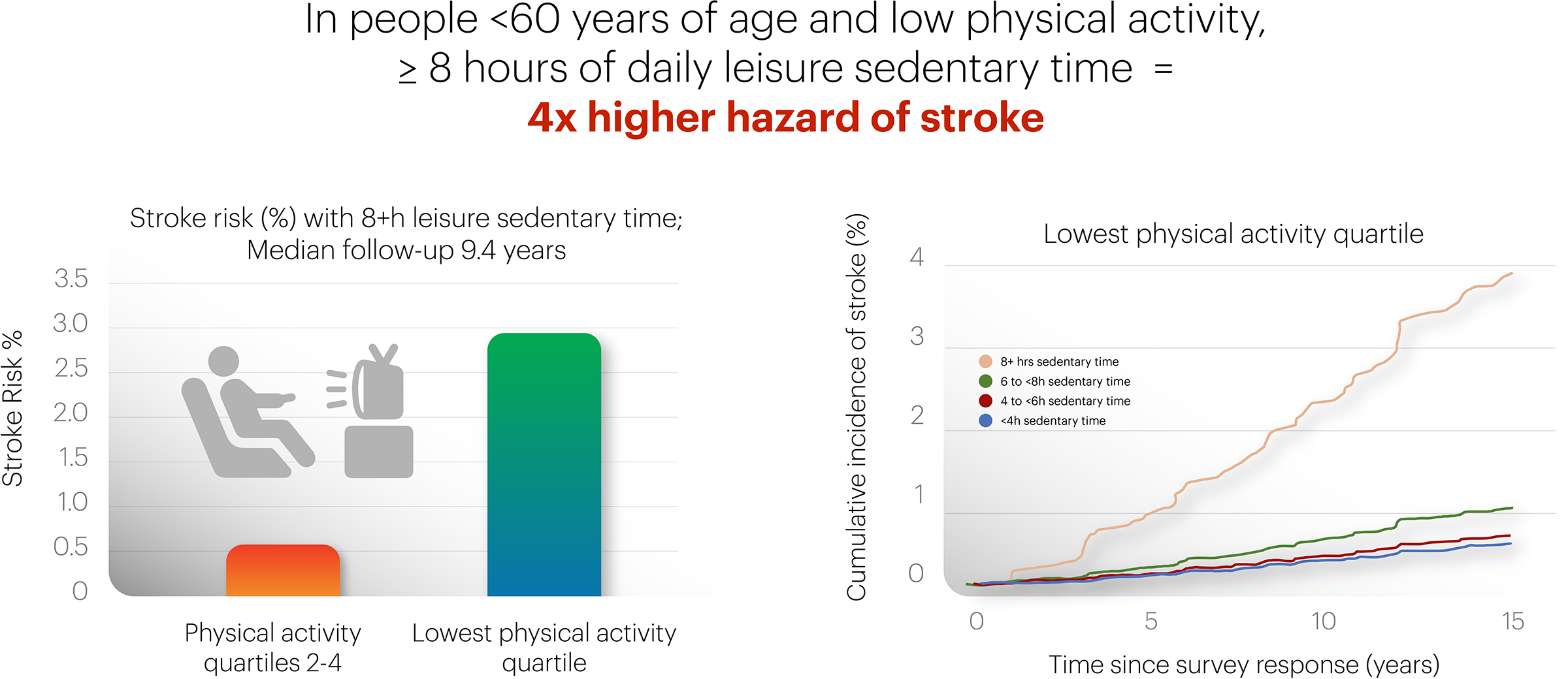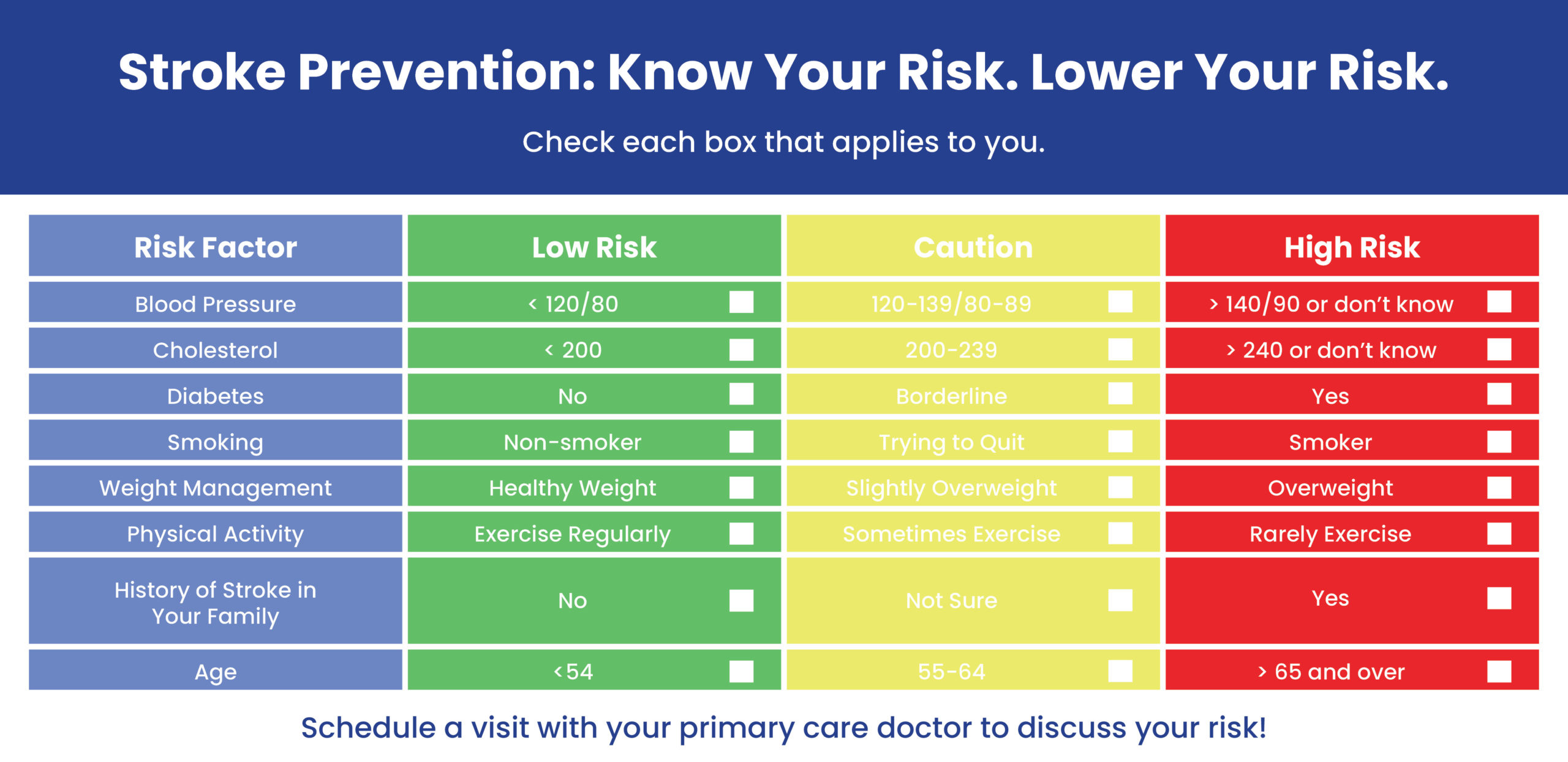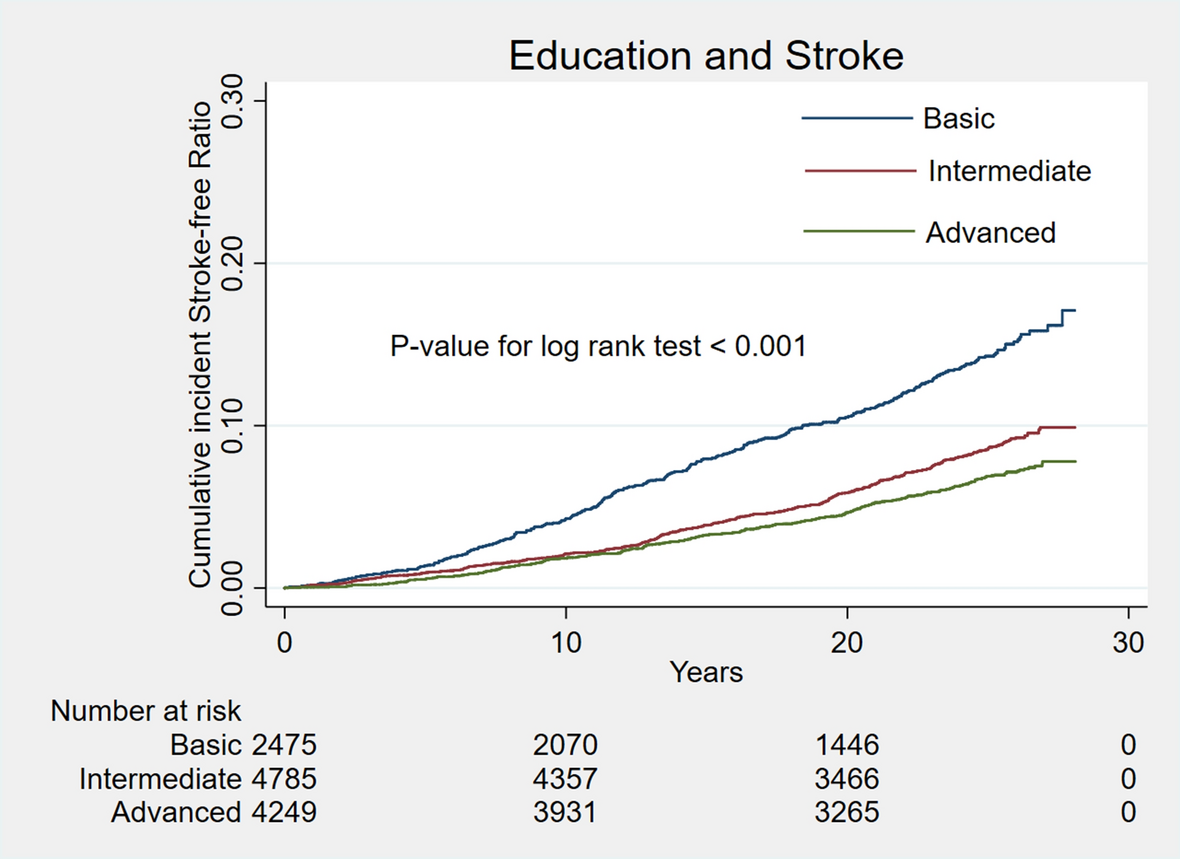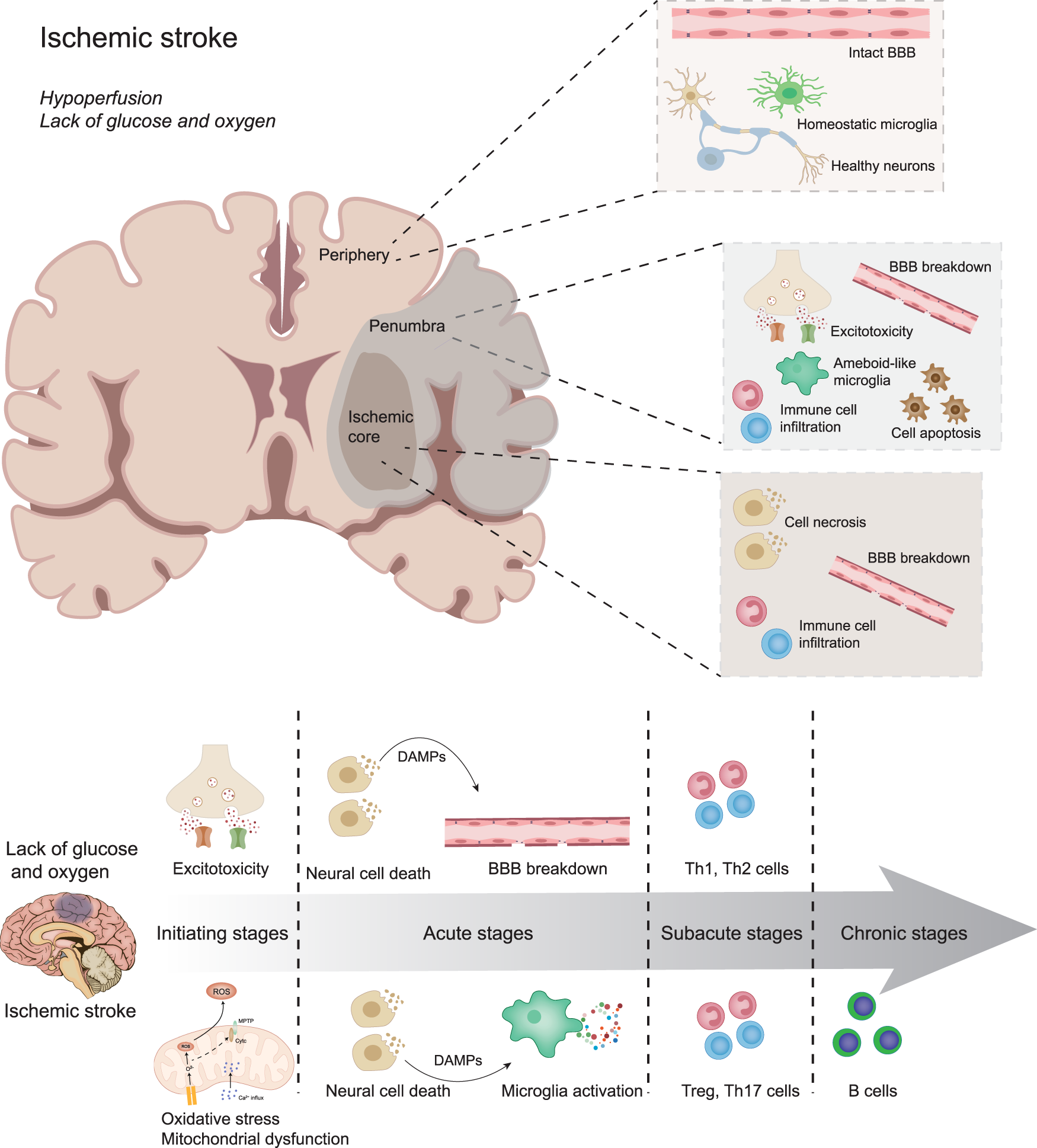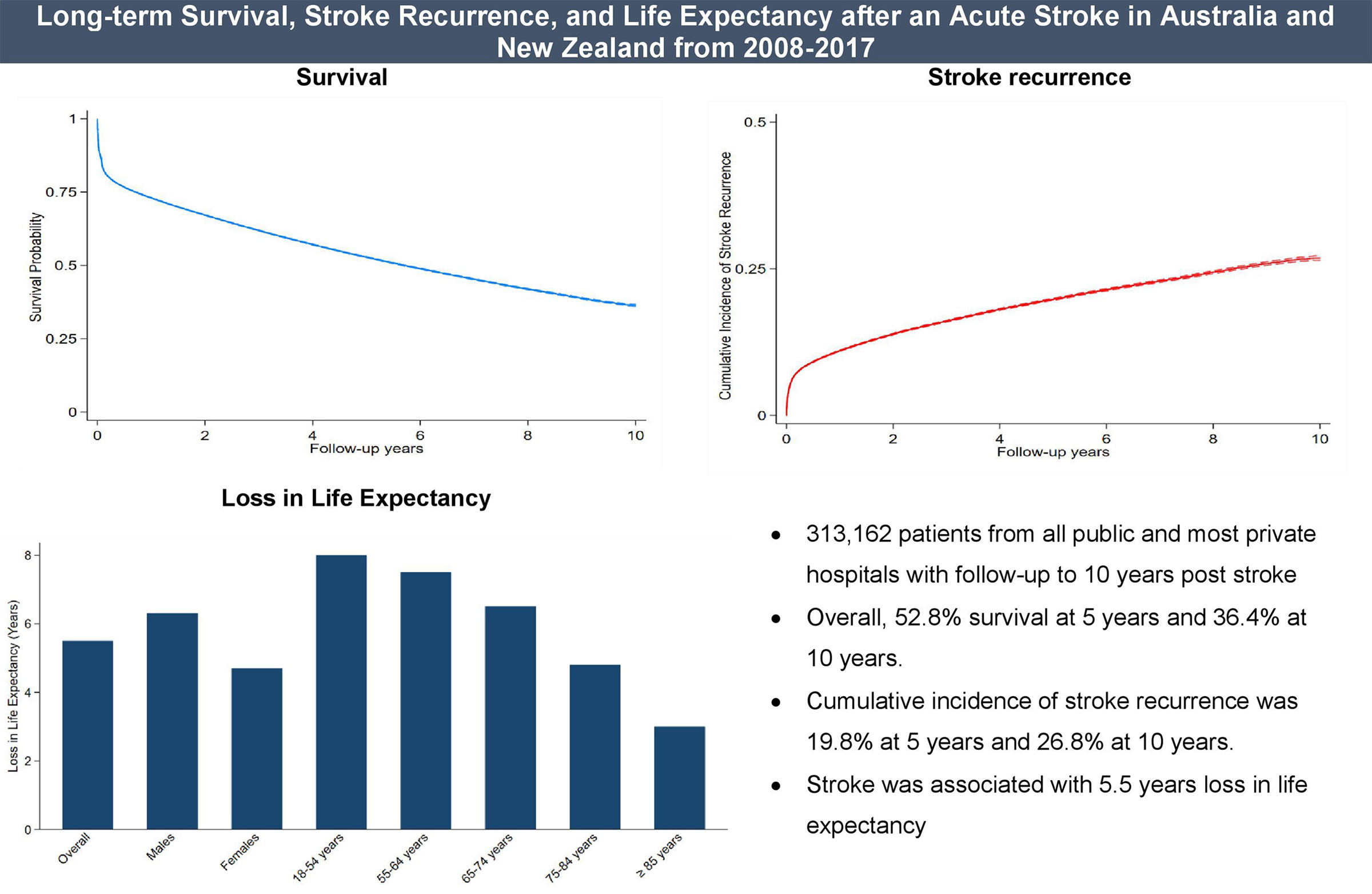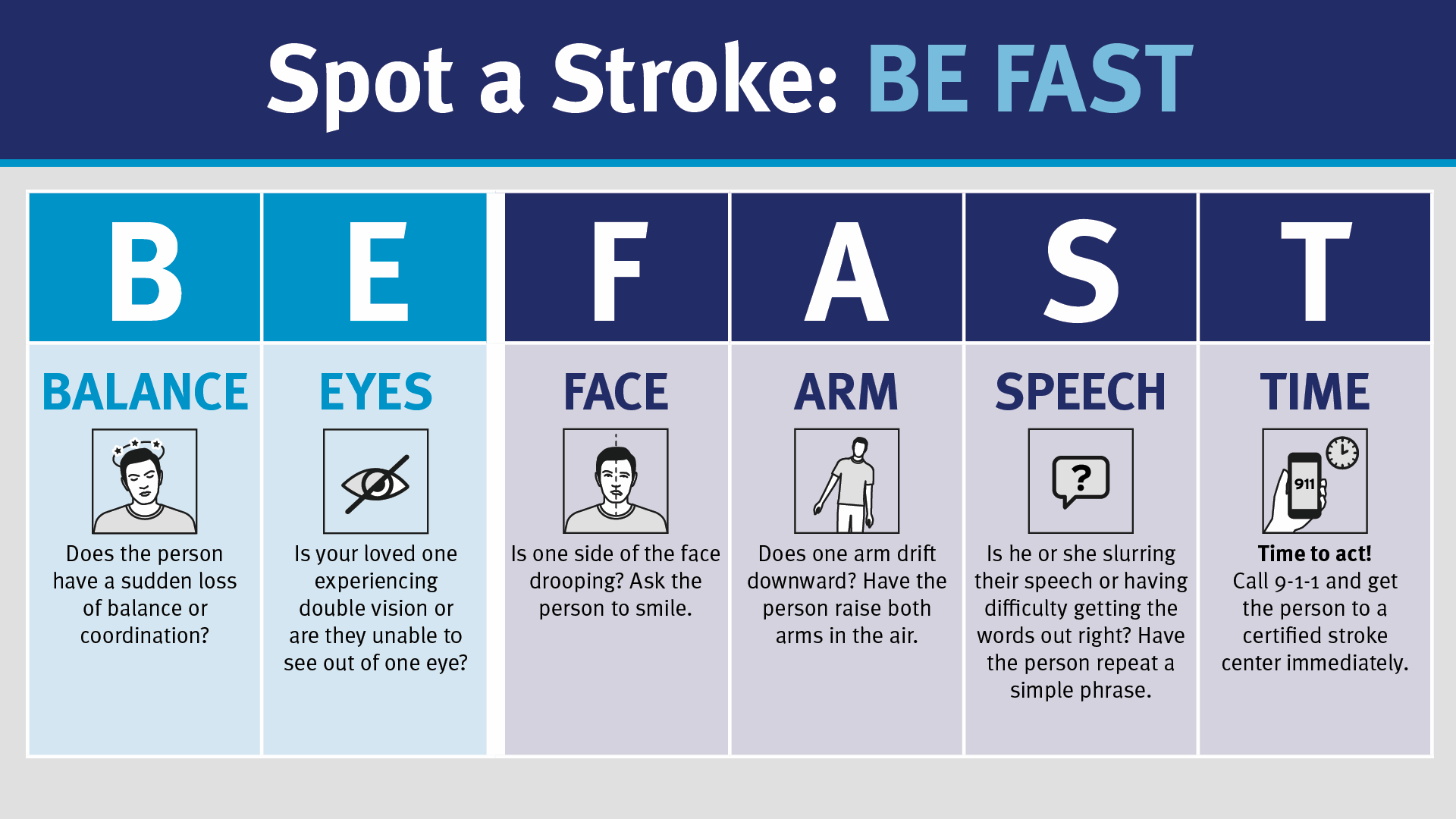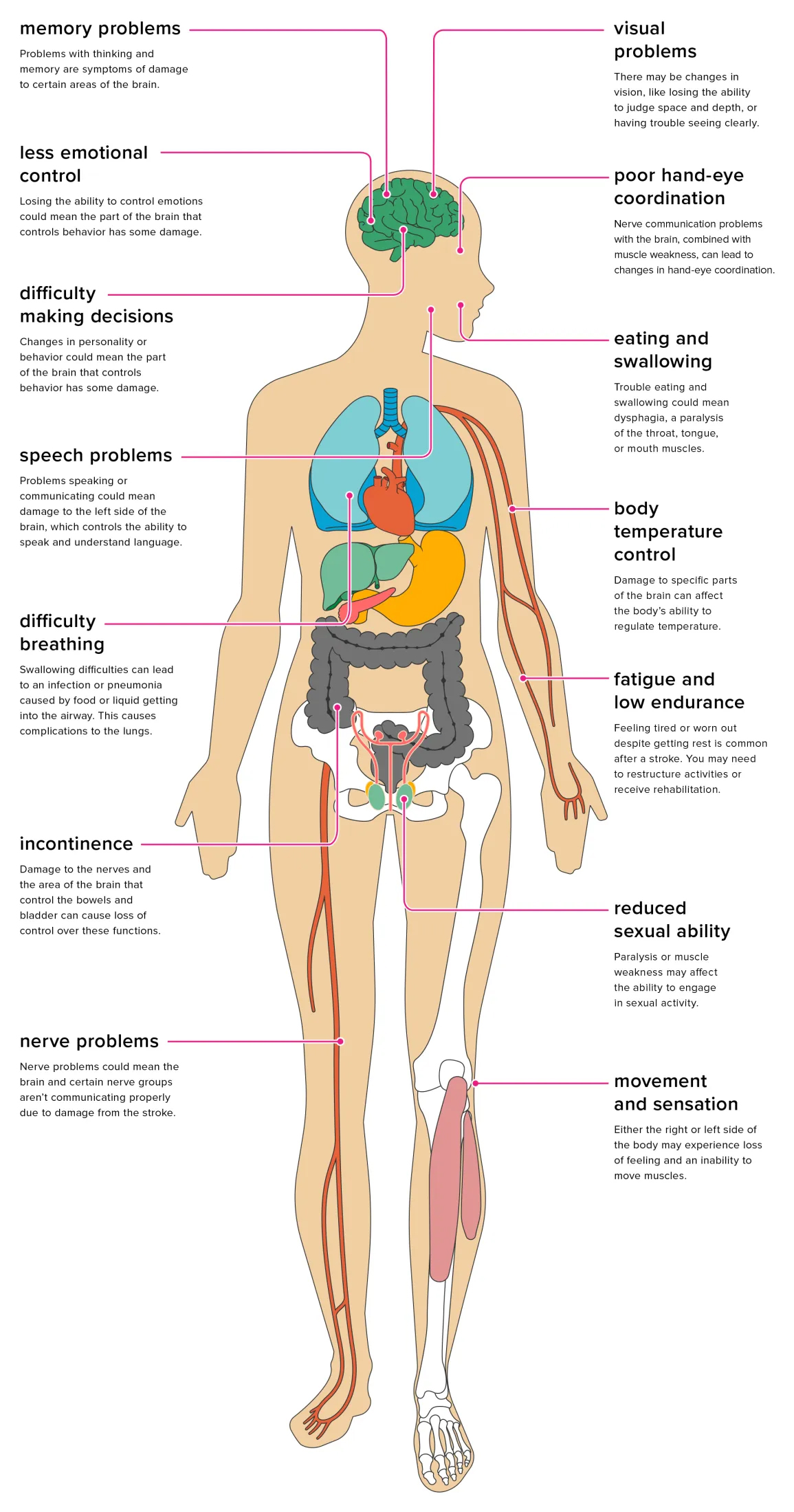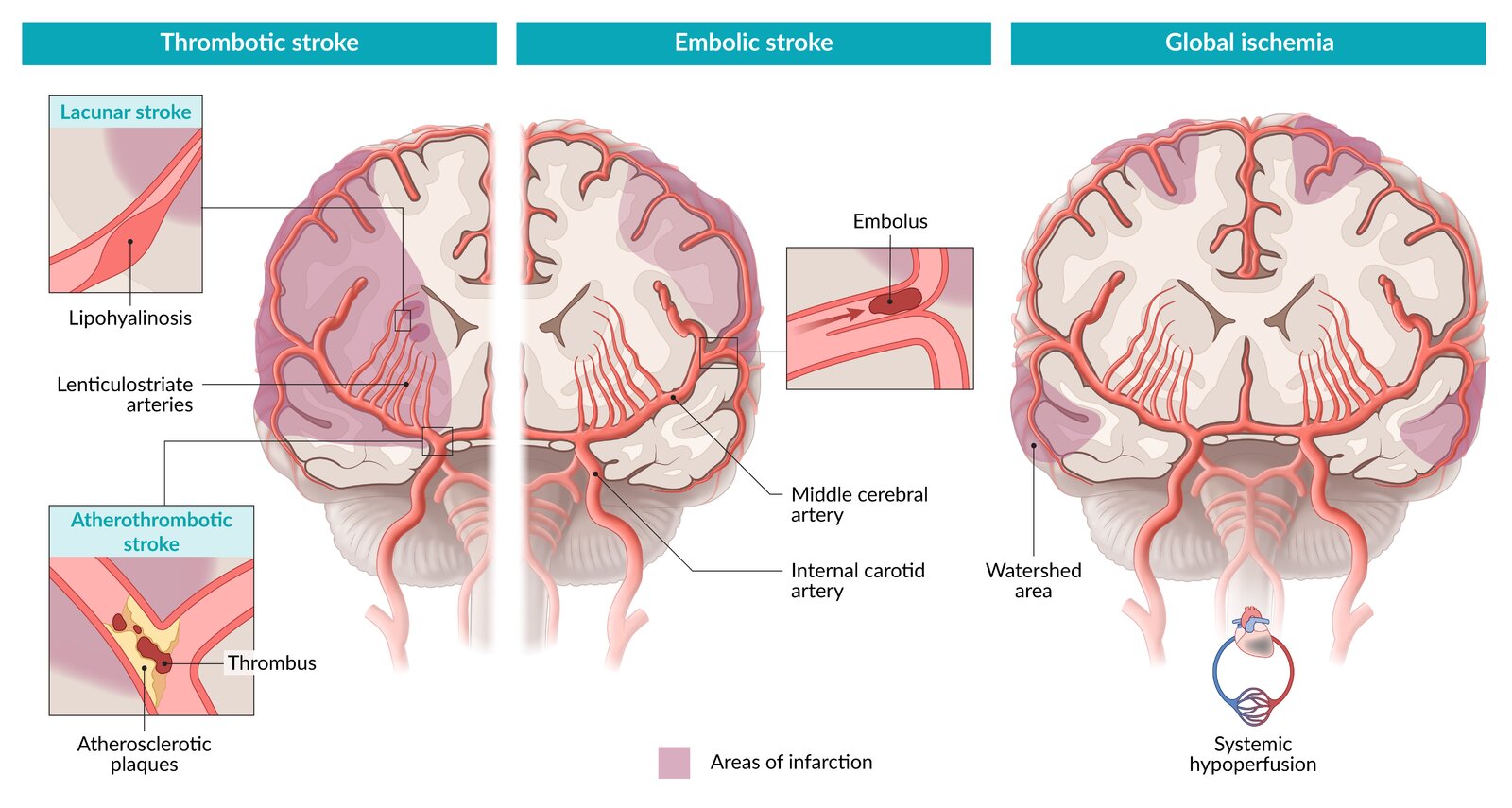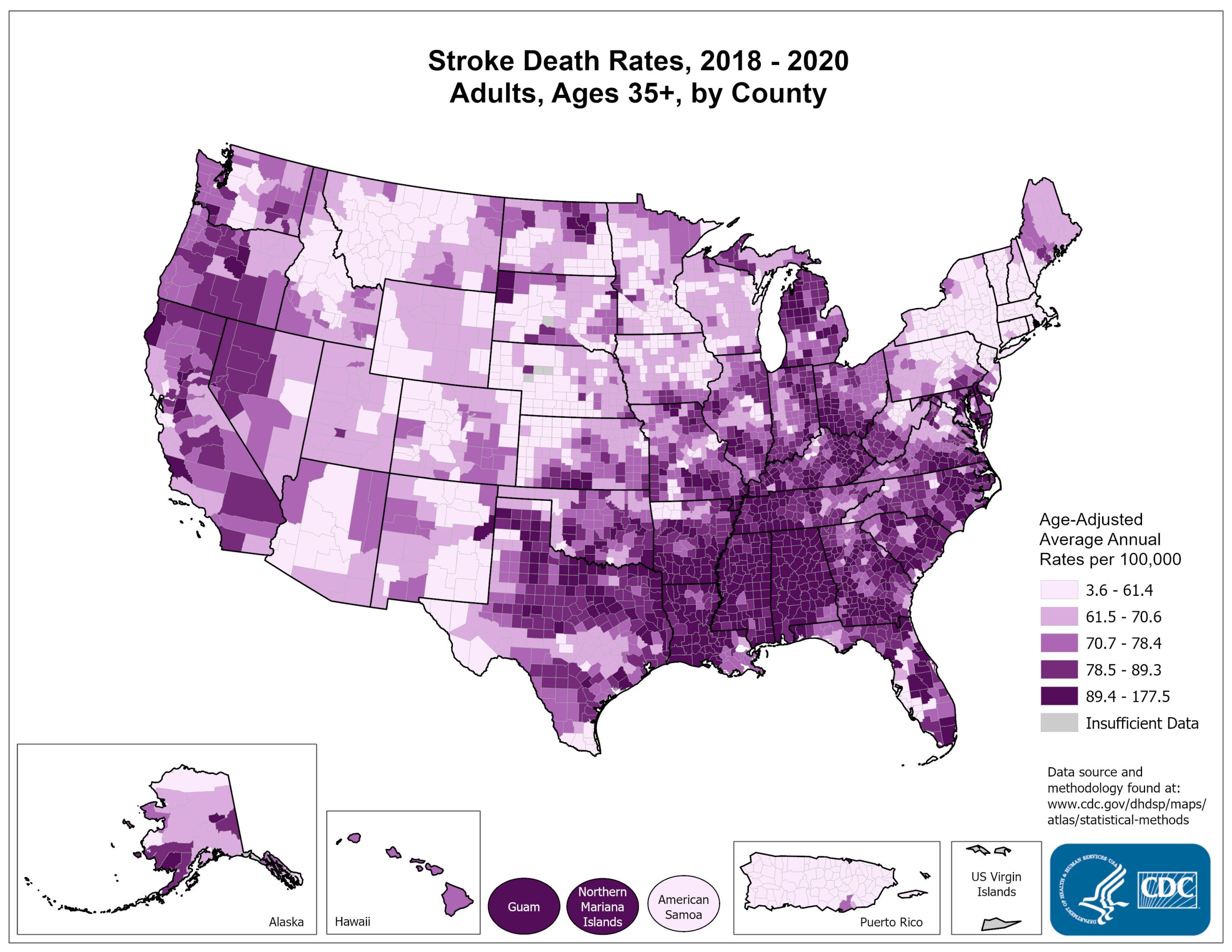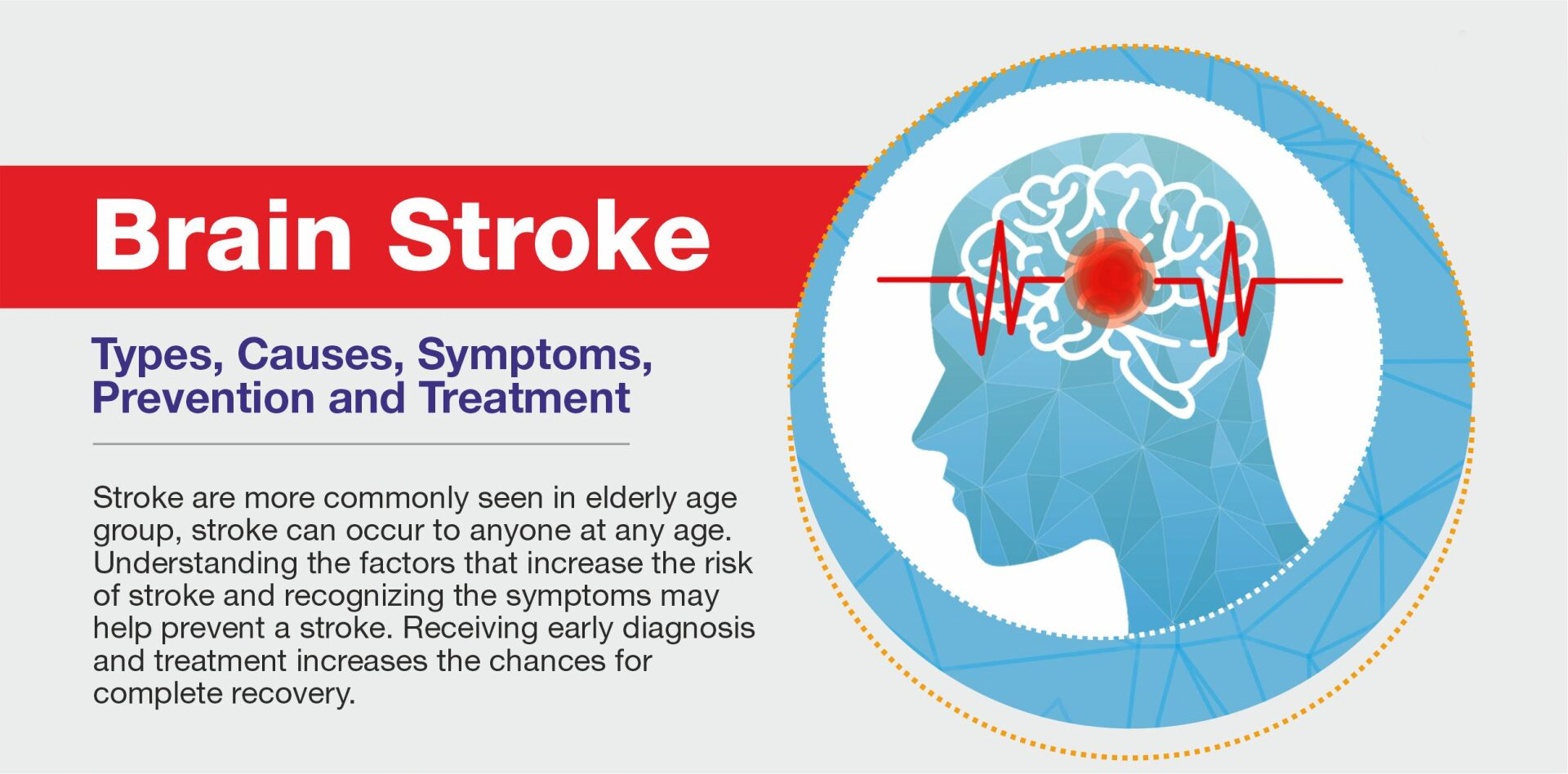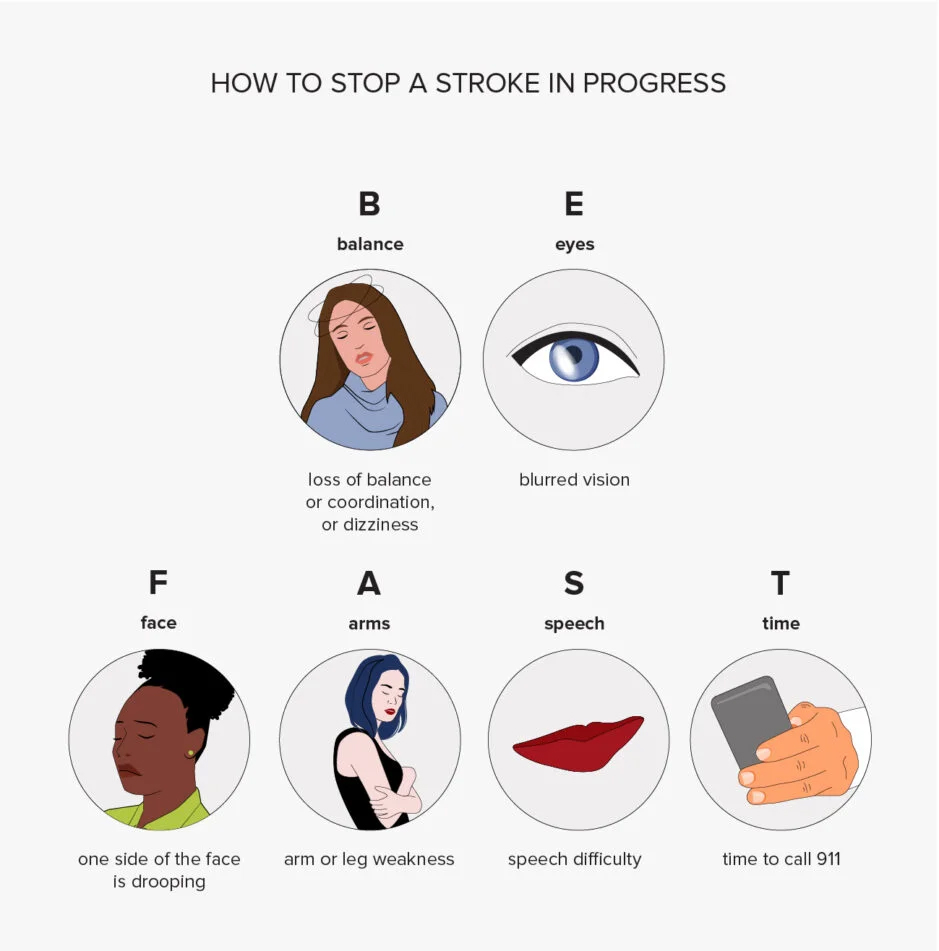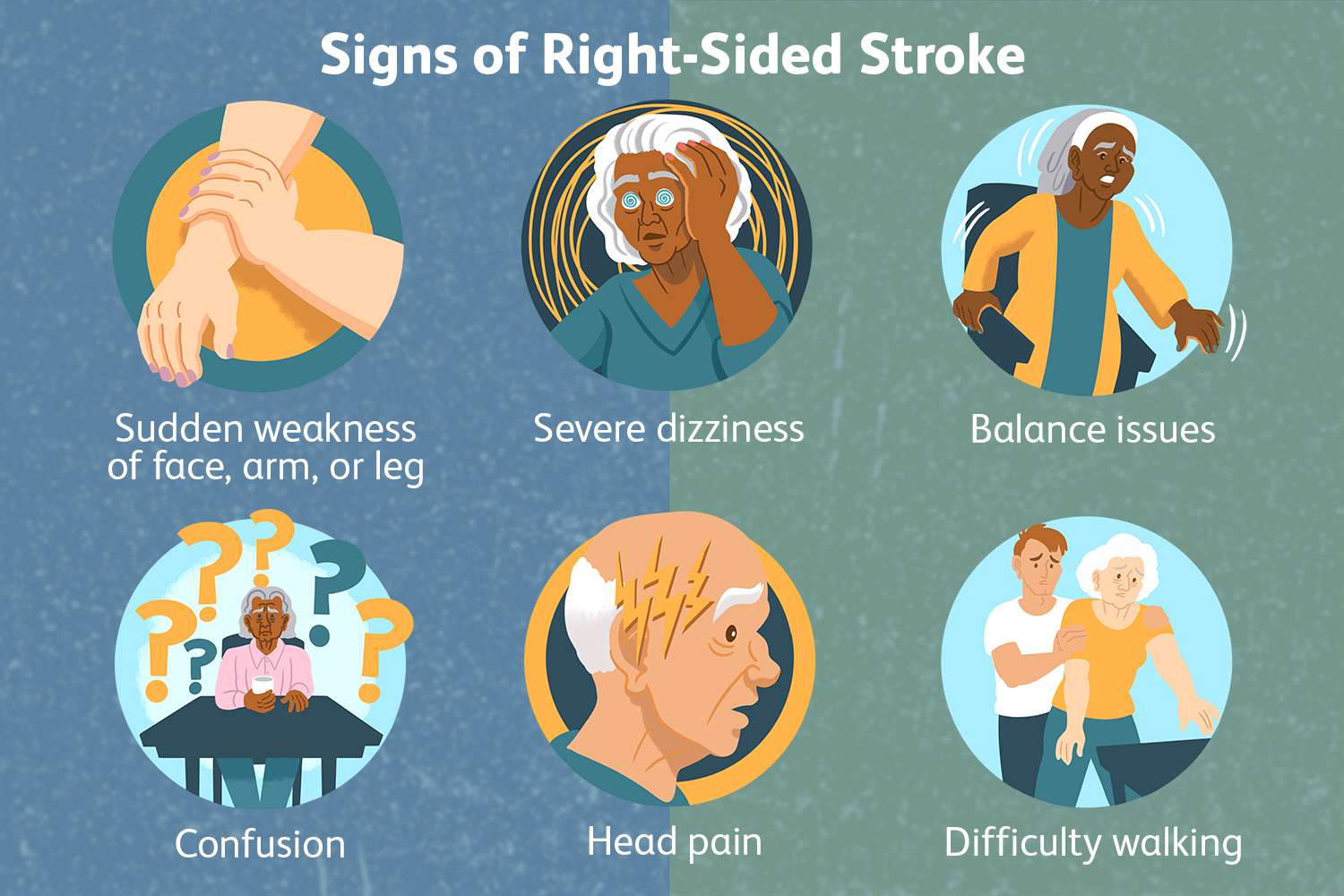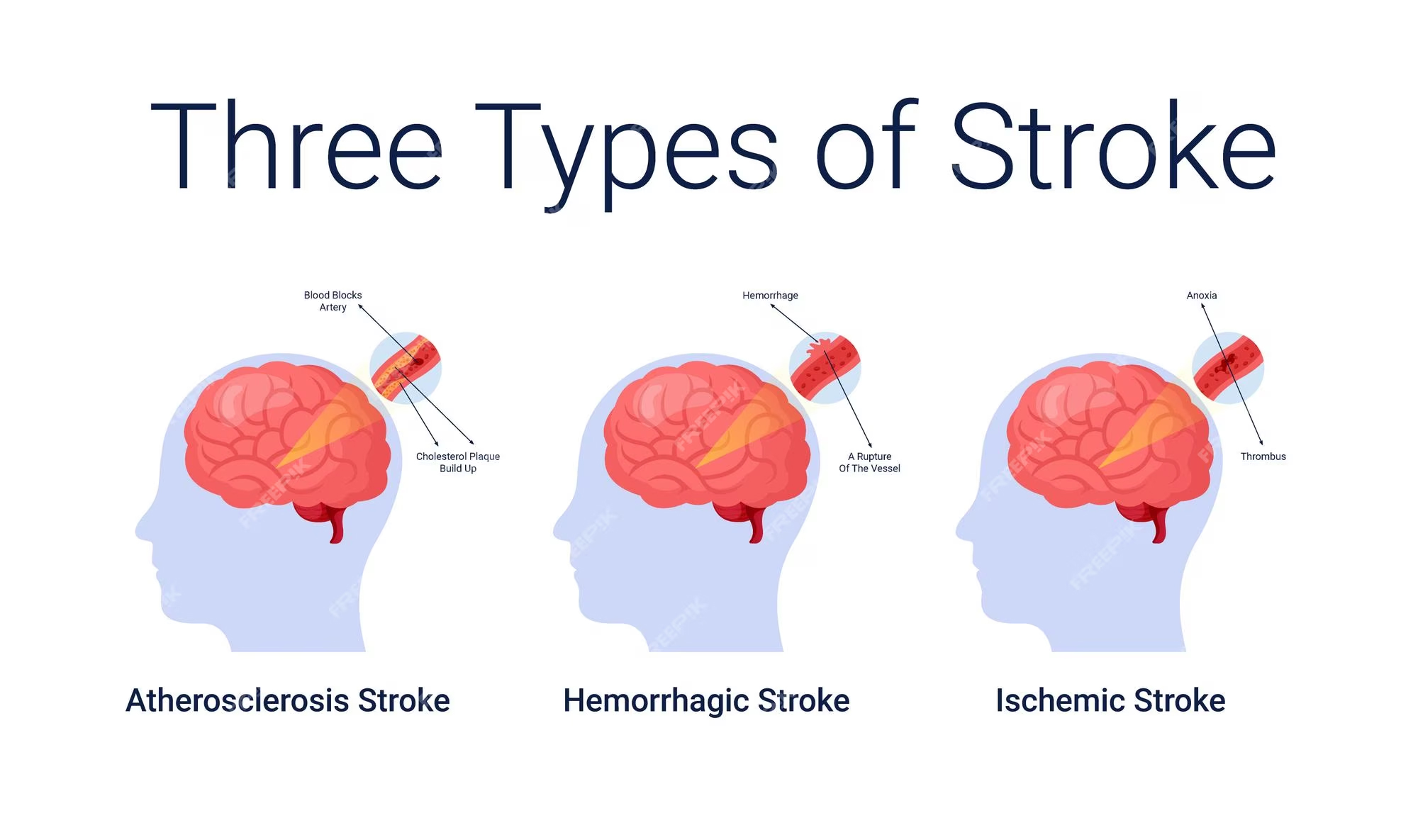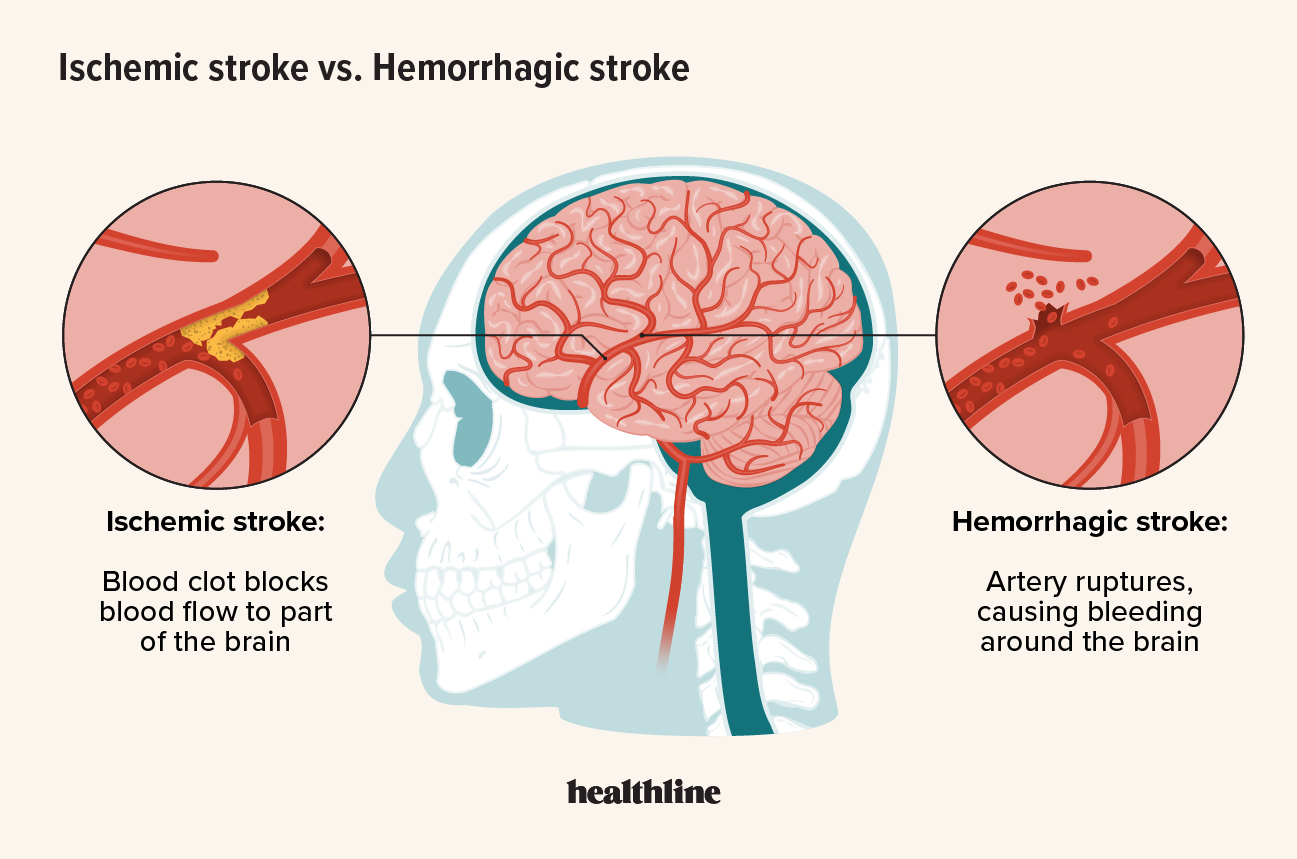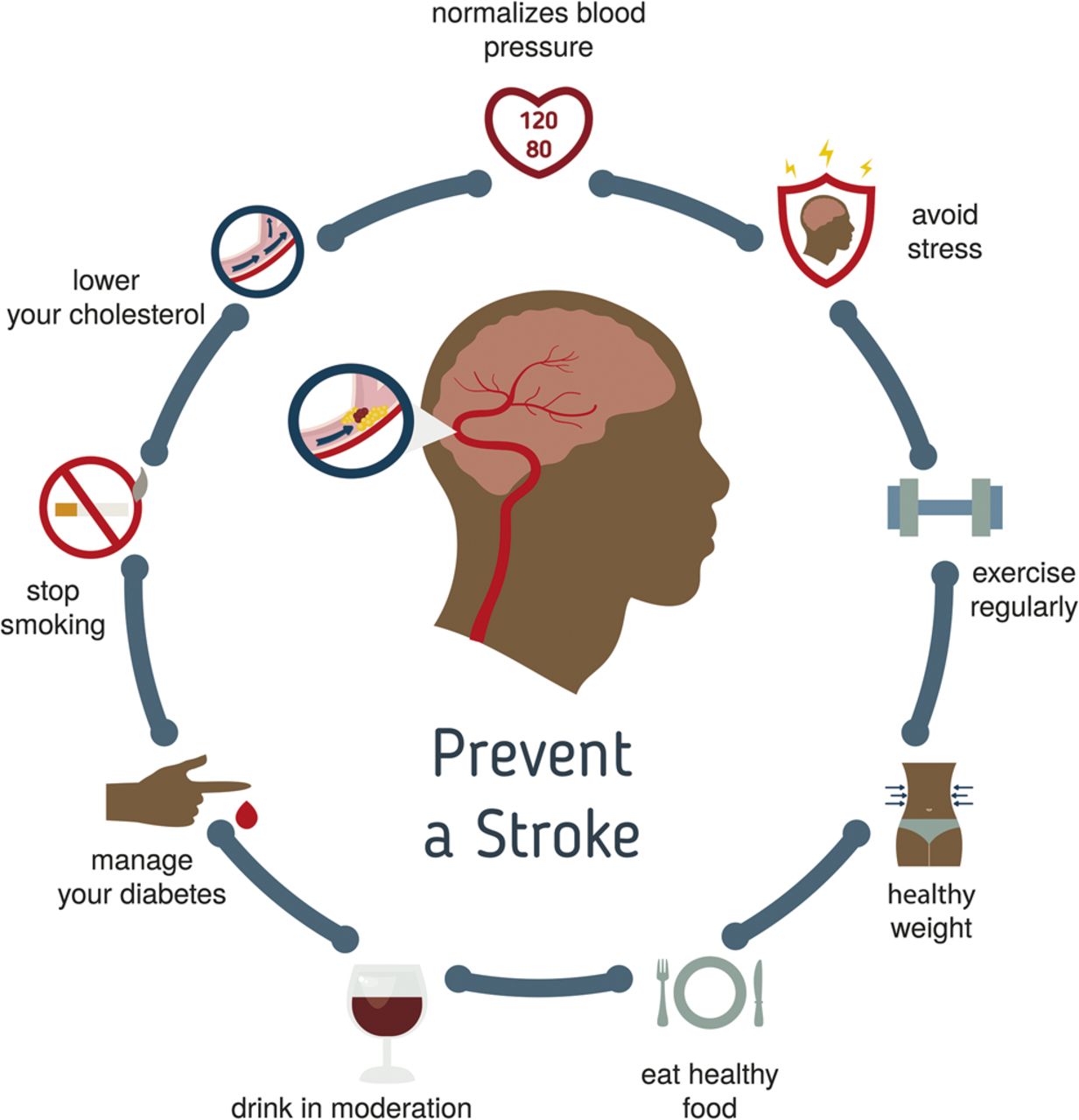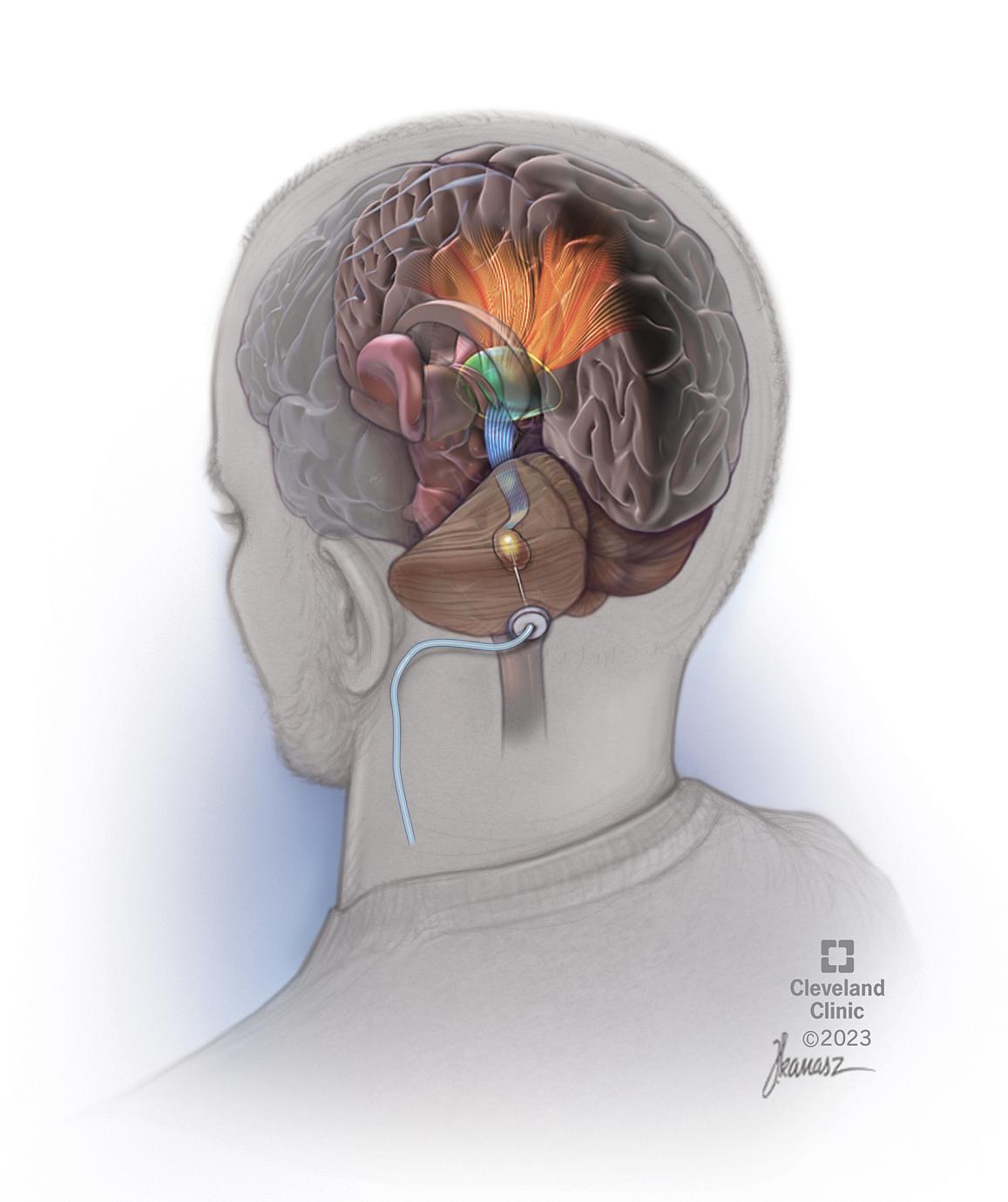
Key facts
- A stroke occurs when your brain can’t get enough oxygen and important nutrients. This is usually because a blood clot or sudden bleed reduces the blood supply.
- Signs of a stroke can include a drooping face, difficulty moving your arm(s), or slurred speech.
- If you notice signs of a stroke, call triple zero (000) immediately, since any delay may lead to permanent brain damage or death.
- You can reduce your chance of having a stroke by managing risk factors such as high blood pressure and cholesterol. Eating healthily and exercising will also help.
What is a stroke?
A stroke occurs when the blood supply to a part of your brain is suddenly reduced. This prevents your brain from getting oxygen and other nutrients from your blood.
Your brain needs a continuous supply of oxygen and nutrients from your blood. Without oxygen or nutrients, your brain cells die and the affected area can suffer permanent damage.
There are 2 main reasons for reduced blood supply:
- a blood clot
- a bleed
One in 4 people with have a stroke in their lifetime.
What are the symptoms of a stroke?
You can remember the main symptoms of stroke by using the word FAST. If you think someone may be having a stroke, check the following:
- Face — Has their face or mouth drooped?
- Arms — Can they lift both arms?
- Speech — Is their speech slurred? Do they understand you?
- Time is critical — If you see any of these signs, call triple zero (000) immediately and ask for an ambulance. Early treatment could save their life.
Other possible signs of stroke include:
- weakness or paralysis elsewhere in the body, on one or both sides
- loss of sensation, usually on one side
- loss of vision or blurred vision in one or both eyes
- a sudden and severe headache
- dizziness, loss of balance or an unexplained fall
- difficulty swallowing
- drowsiness or loss of consciousness
Remember that a stroke is always a medical emergency. The longer it takes to get treatment, the more likely there will be stroke-related brain damage afterwards.
What causes a stroke?
There are 2 main types of stroke:
- ischaemic (clot) strokes
- haemorrhagic (bleed) strokes
Ischaemic strokes
An ischaemic stroke is when a blood clot blocks the blood supply to part of your brain. This is the most common type of stroke.
There are 2 main types of ischaemic strokes:
- A thrombotic stroke — when a clot or blockage forms in a blood vessel in your brain.
- An embolic stroke — when a blood clot forms elsewhere in your body (often your heart), and travels to block a blood vessel that supplies your brain.
Haemorrhagic stroke
Haemorrhagic strokes happen when the wall of a blood vessel in your brain suddenly breaks. This causes a bleed in your brain. This stops your brain from getting oxygen and nutrients.
Haemorrhagic strokes can also be caused by a cerebral aneurysm (a weak spot in an artery wall) bursting from sudden pressure or trauma.
There are 2 types of haemorrhagic strokes:
- An intracerebral haemorrhage (ICH) occurs when an artery in your brain bursts and bleeds.
- A subarachnoid haemorrhage (SAH) occurs when a bleed happens in the space surrounding your brain.
What will increase my risk of having a stroke?
A transient ischaemic attack (TIA) or ‘mini-stroke’ can cause stroke-like symptoms. They often only last a few minutes and you get better within 24 hours.
It’s caused by a temporary blockage to your brain’s blood supply. A TIA means you have a higher chance of experiencing a stroke.
A TIA is a medical emergency. Call triple zero for an ambulance if you have symptoms of a TIA, even if the symptoms go away and you feel better.
Other conditions that can increase your risk of stroke include:
- high blood pressure
- high cholesterol
- diabetes
- atrial fibrillation (an irregular heartbeat)
Some lifestyle factors can also increase your risk of stroke, including:
- smoking
- unhealthy diet
- inactive lifestyle
- drinking alcohol
When should I see my doctor?
If you suspect you — or another person — are having a stroke, it’s important to get help quickly. Call triple zero (000) immediately and ask for an ambulance.
How is a stroke diagnosed?
Your doctor will ask about your symptoms and examine you. To diagnose a stroke they will organise tests, including images of your brain.
The tests may include:
- a CT scan
- an MRI scan
- an angiogram or ultrasound — to find the blood clot and assess your blood flow
- an electrocardiogram (ECG) — to check for unusual heart rhythms
- blood tests
How is a stroke treated?
Your exact treatment will depend on what caused your stroke. Treatment generally involves both immediate and long-term measures.
Immediate stroke treatment
For ischaemic strokes, there are medicines to dissolve your blood clot.
Blood clots can also be removed with a special procedure called endovascular thrombectomy. This involves a catheter (thin tube) being threaded through a blood vessel from your groin to your brain. This is used to find and remove the clot.
Sometimes brain surgery is recommended.
Aspirin is also often given after an ischaemic stroke. Anticoagulant medicines (sometimes called ‘blood thinners’) may also be recommended for some people.
For haemorrhagic strokes, immediate treatment may involve:
- intensive blood pressure control
- surgery to relieve swelling in your brain
- surgery or a procedure to repair the ruptured blood vessel
Longer-term treatment
Post-stroke care may include:
- stroke rehabilitation
- surgery to increase the blood flow in your carotid artery (in the front of your neck)
Sometimes a long-term care facility may be the best option.
Physiotherapists, occupational therapists, speech pathologists and psychologists can all help you regain your function.
Can strokes be prevented?
More than 4 in 5 strokes are preventable. There are several things you can do to help prevent a stroke (or another stroke).
Work with your doctor to treat any conditions that can increase your risk of having a stroke, such as:
- high blood pressure
- diabetes
- high cholesterol
- atrial fibrillation
You can also reduce your risk of stroke by maintaining a healthy lifestyle, including by:
- staying active
- eating well
- quitting smoking
- drinking alcohol in moderation
How do I lower my risk of having another stroke?
If you’ve already had a stroke or TIA, it’s even more important to make the following lifestyle changes.
- Staying active — this helps you maintain a healthy weight and improve your health.
- Improve your diet — a diet that’s varied, high in fibre, fruit, nuts, vegetables and healthy fats, but low in saturated fat and salt, can help prevent stroke.
- Quit smoking — smoking cigarettes doubles your risk of having a stroke.
- Avoid or reduce alcohol — drinking alcohol increases your risk of stroke.
Complications of stroke
A stroke can be fatal. Every day, 23 Australians die from a stroke. Among those who survive, many will have a long-term disability. They are likely to always need help with talking, moving and self-care.
Long-term complications of a stroke may include:
- weakness or lack of movement (paralysis) in your limbs
- difficulty speaking or swallowing
- difficulty reading or writing
- shoulder pain
- feeling tired (fatigue)
- changes to how things feel when you touch them (sensory problems)
- changes to how you see or understand things (perceptual problems)
- problems thinking or remembering (cognitive problems)
- problems with bowel or bladder control (incontinence)
- problems controlling your feelings and emotions
Complete recovery is often possible since your brain learns to compensate for any damage. However, many people never fully regain their former abilities.
Depression is common among people who have had a stroke. You may not feel motivated to take medicine or complete physical rehabilitation.
Depending on which part of your brain is affected, changes in your personality and mood can develop. This may distress your family members and close friends.
It’s important to try and return to normal life where possible. Try to resume some kind of work and engaging in your favourite activities, hobbies and interests.

